
THE ORIGINATORS
Written by Karizza Sanchez
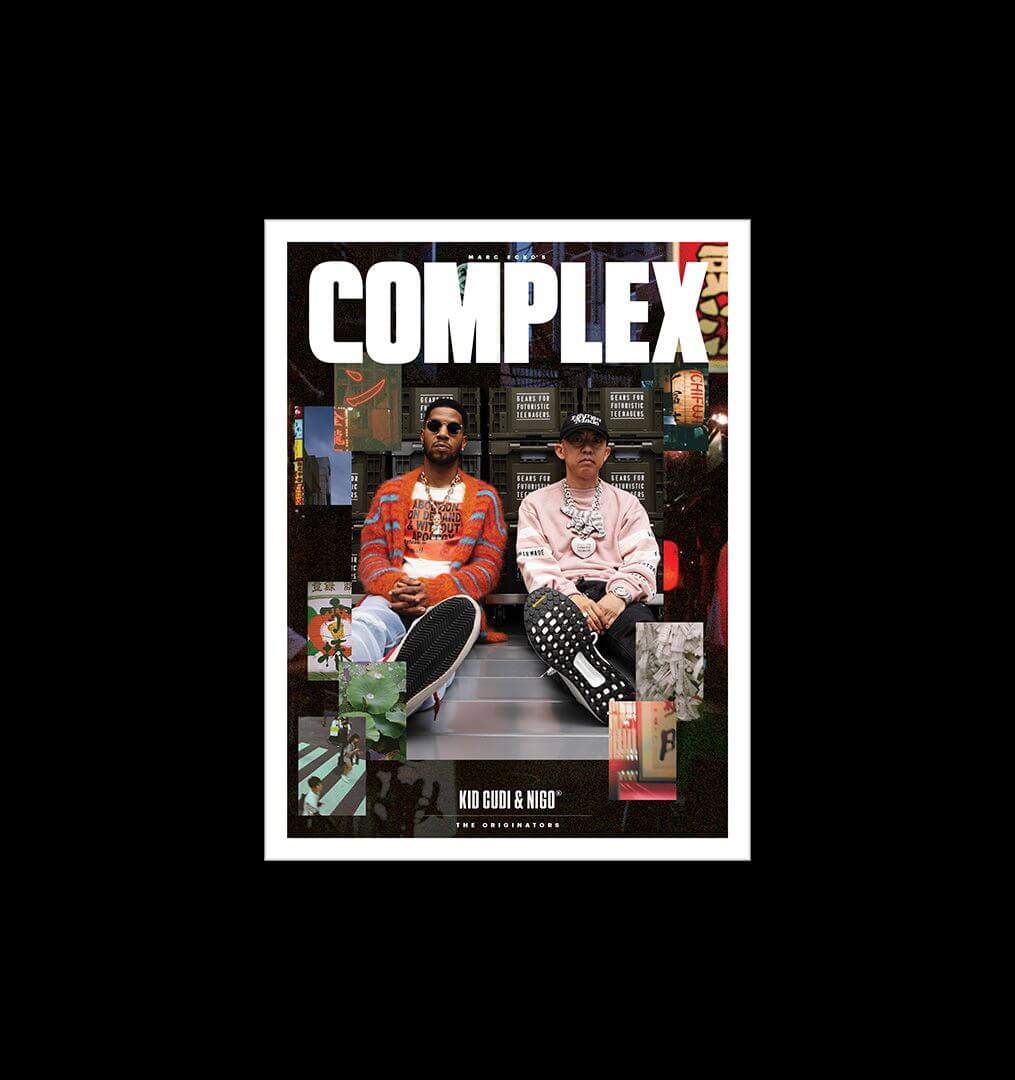
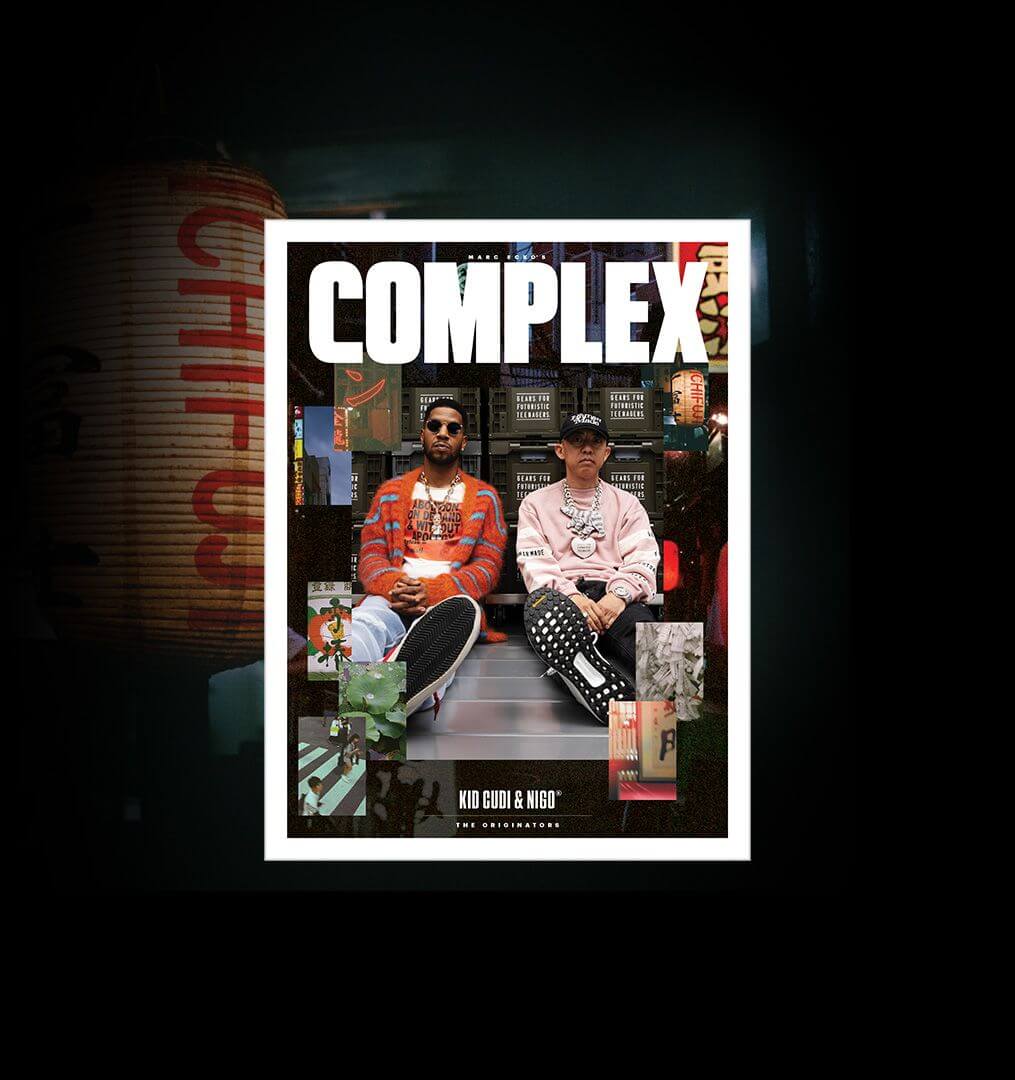
Kid Cudi was 20 years old when he decided to leave his hometown of Cleveland and move to New York City. He had tried college for a year, but wasn’t feeling it, and even considered joining the Navy, though that didn’t work out, either. Ultimately, he wanted to pursue music, and craved an environment where he could “grow and meet interesting people.” New York, he thought, could be that place.
So one day he bought a one-way ticket to New York, packed up his things—clothes, sneakers, the demo he made in college, and $500 in cash—and left. It wasn’t easy. He still remembers the day his mom dropped him off at the airport. “She was crying,” Cudi recalled during his TEDx talk in 2015. “She was giving me a hug at the airport and leans in and goes, ‘I can always turn back around and we can go back home. You can change your mind. Everything will be fine.’” But Cudi stuck to his guns. “I was on a mission,” he added. “It was bigger than just wanting to be a musician or do movies. It was about finally showing the world what Scott could do.”
Except things didn’t immediately pop off for him. His first few jobs in New York were in retail—at American Apparel, Abercrombie & Fitch, and Dean & DeLuca. He held most of the jobs just to cover his bills and studio time. But there was one that Cudi, to this day, calls a “dream job.”
Shortly after relocating to New York, Cudi learned about A Bathing Ape, the wildly popular and exclusive Japanese brand founded by NIGO® in 1993, and fell in love with its loud graphics and bright colors. At the time, Bape’s two-story, million-dollar flagship in SoHo—the label’s first store outside of Japan, a strategic move by the designer to expand his empire internationally—had just opened in 2004. Cudi desperately wanted to work there, so he applied. And then applied again. And again. Until he finally got hired in 2008.
At the time, Cudi was so broke he didn’t have a bank account (he used his mom’s instead). And for the first few weeks on the job, he wore the same outfit every day or borrowed clothes from co-workers. It didn’t matter, though; he was just happy to be there. “I didn’t own anything [Bape] prior to being hired,” he told Hypebeast. “So it was a dream come true to be able to work at the store I dreamed of shopping in one day.”
But Cudi’s stint at Bape wouldn’t last long. The year before, while he still worked at Abercrombie & Fitch, he met Dot da Genius through a co-worker. They clicked instantly and began making music together, including what wound up being Cudi’s first single, “Day ‘N’ Nite.”
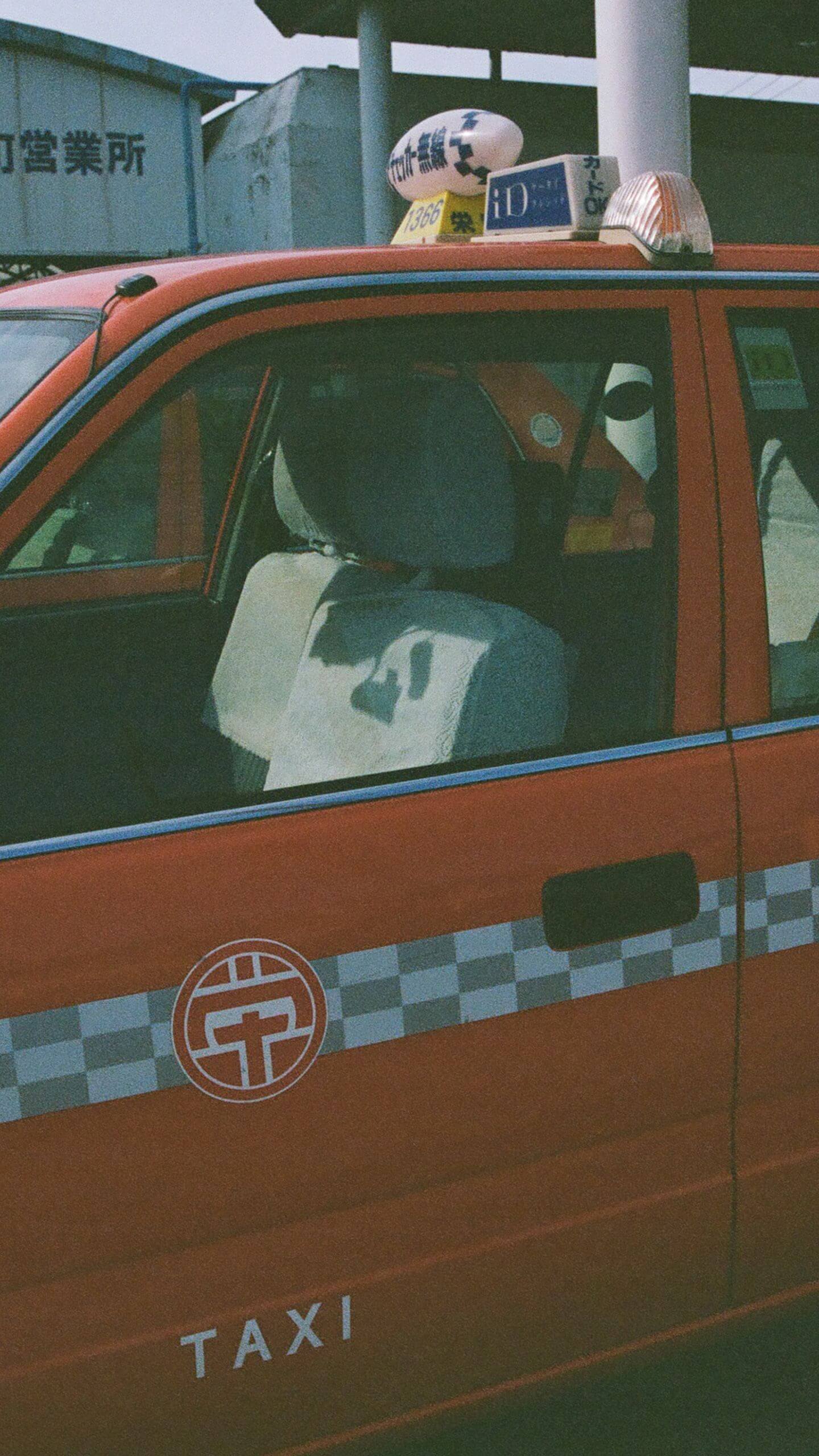
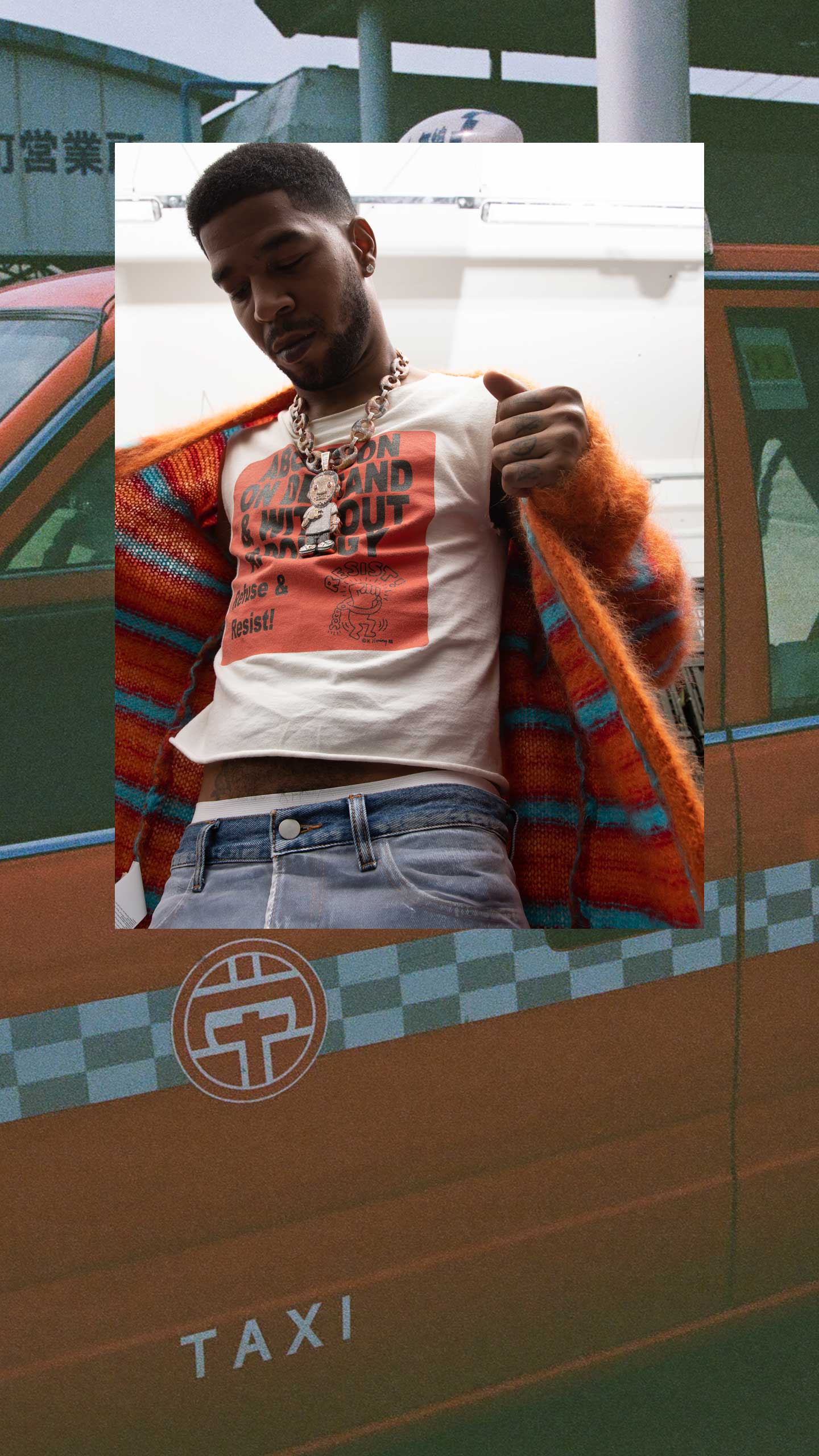
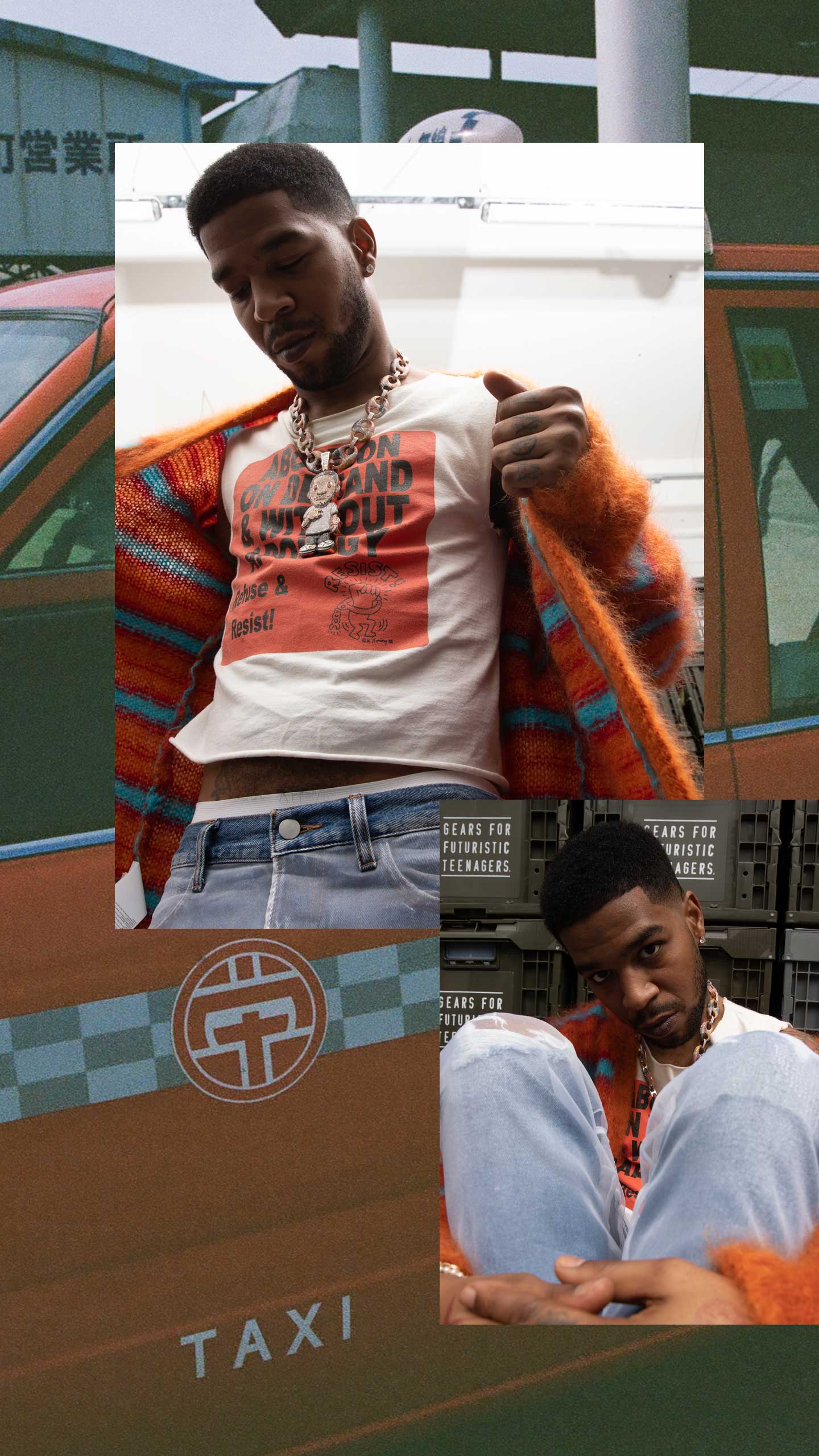
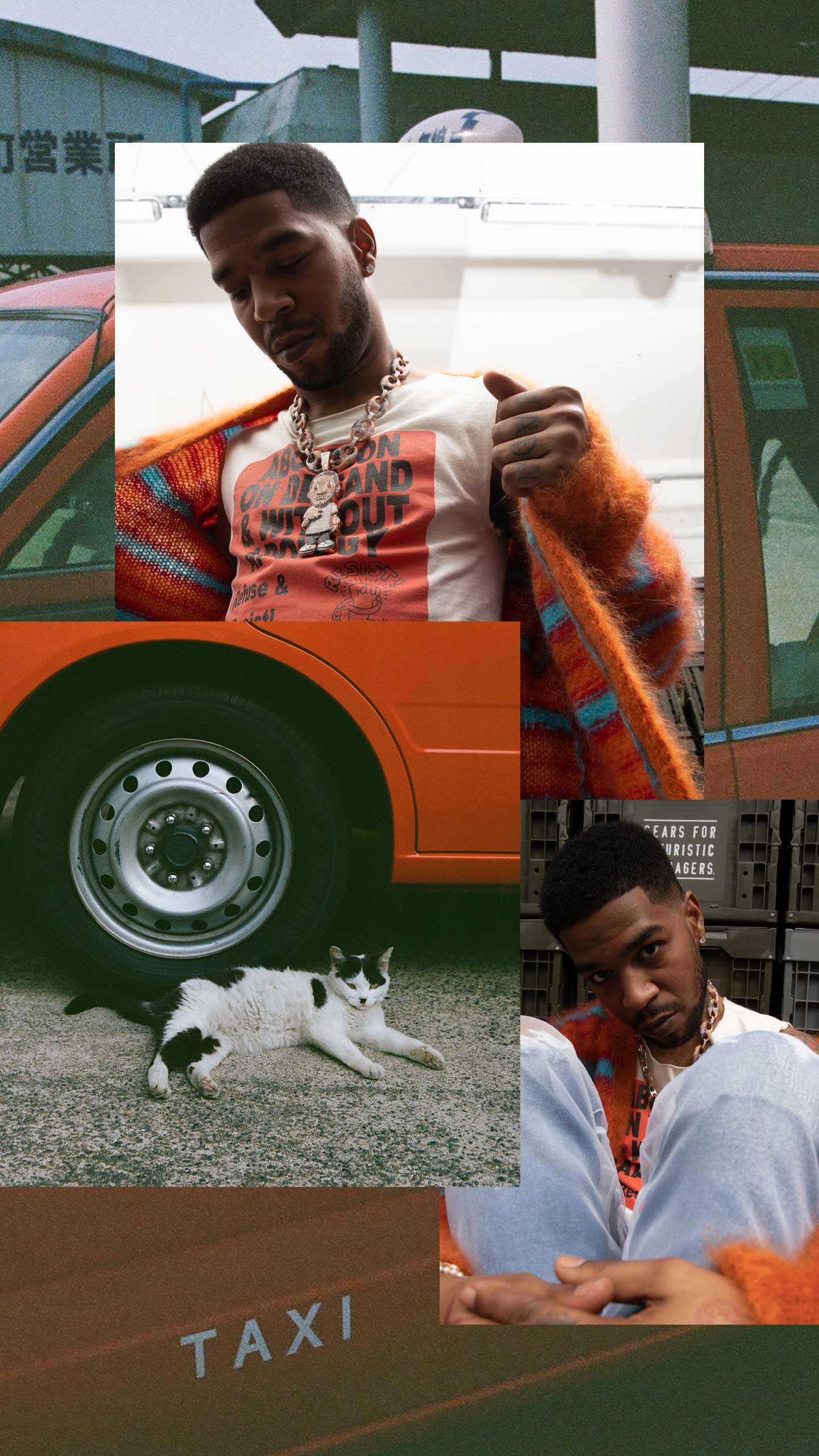
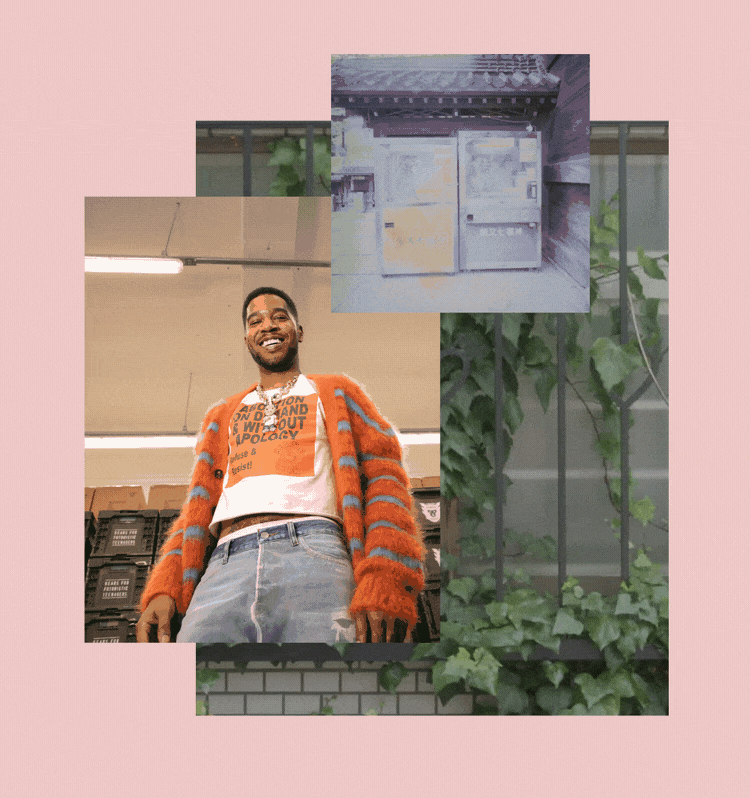
“Day ‘N’ Nite” didn’t blow up at first. While it was racking up hits on MySpace, and then as a single on A-Trak’s Fool’s Gold label, radio didn’t get around to it until 2008. But eventually, after making its rounds on music blogs and the charts (it peaked at No. 3 on the Billboard Hot 100), the single and the remix by Italian production duo Crookers brought Cudi enough buzz that he got the opportunity to tour in Australia. He had a tough choice to make: continue working at his then-dream job or chase his ultimate dream to be an artist. He chose music. “I was like, ‘I have to chase this… If I don’t take this, I’m gonna always be like, ‘What the fuck? What did we come here for?’” he said on Pharrell’s Beats 1 Radio show, OTHERtone.
But by that point the Bape store had become a special place of sorts for him. It’s where, perhaps serendipitously, he had one of his first run-ins with Kanye West, who later became a collaborator and mentor. “I was helping him get a couple of things,” he told Hypebeast. “I forgot to take a sensor off of one of the jackets he bought, and I had to run out the store to catch him before he left.”
It’s also where he first met NIGO®.
“I don’t think he remembers me,” Cudi says 11 years later, laughing as he recalls the time NIGO® stopped by the brick-and-mortar with the Teriyaki Boyz, the rap group he founded in 2005. “I still had a fauxhawk. I was a little quiet, and I was trying to stay out the way. I was freaking out.” Cudi, along with a few other Bape employees, wound up taking a picture with NIGO® and the Teriyaki Boyz that day. But, Cudi admits, in the subsequent years, he’d “imagine what it would be like when I officially meet him now that I’ve become this artist.”
All of which makes today all the more special. On the basement floor of NIGO®’s seven-story atelier in Tokyo, on the set of this cover shoot on a June afternoon, Kid Cudi—now a Grammy Award-winning, multiplatinum artist—is seeing NIGO® for the first time since that chance encounter. (When I ask how it’s possible he hasn’t run into NIGO® all these years, Cudi explains that a meeting just hadn’t worked out in the past and that this is only his second time in Japan, the first being in 2017, when he and West visited Takashi Murakami.)
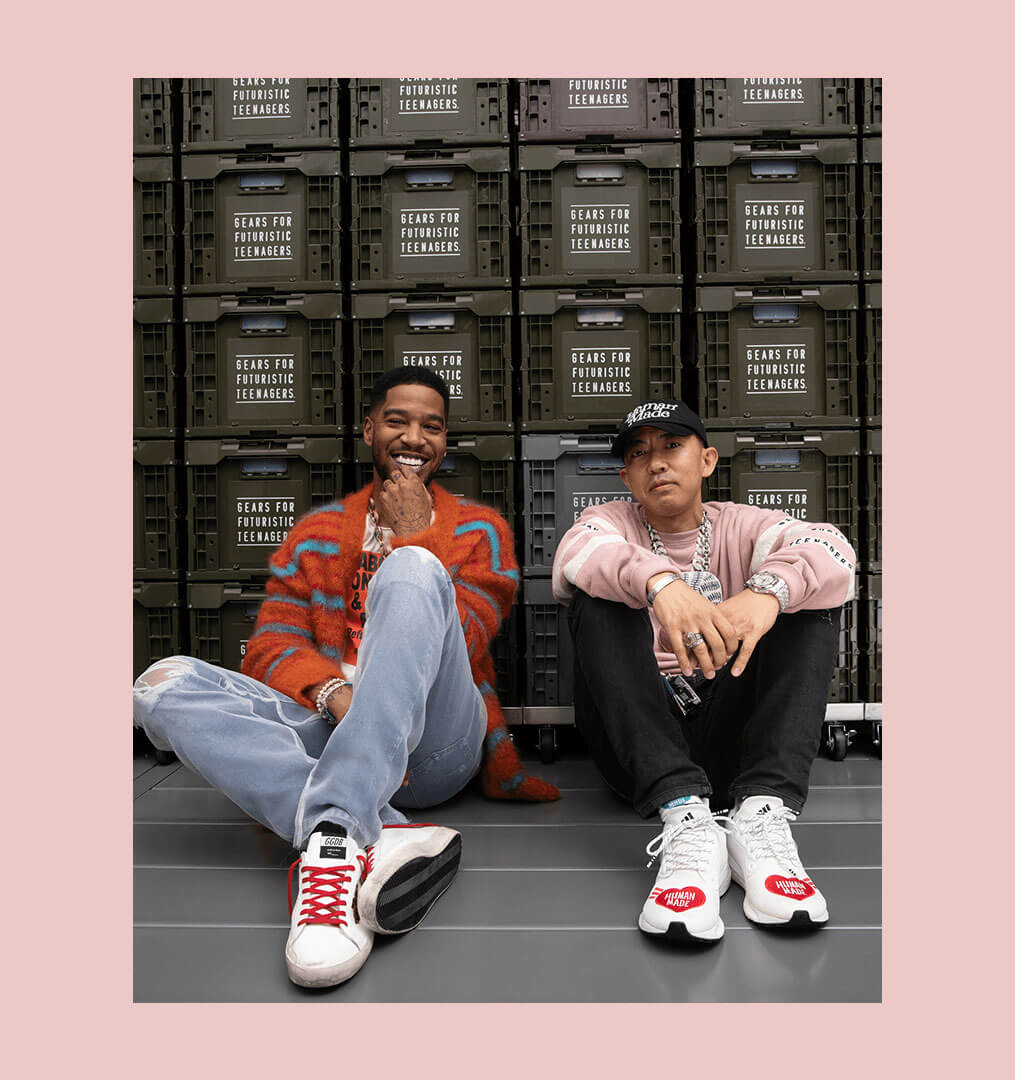
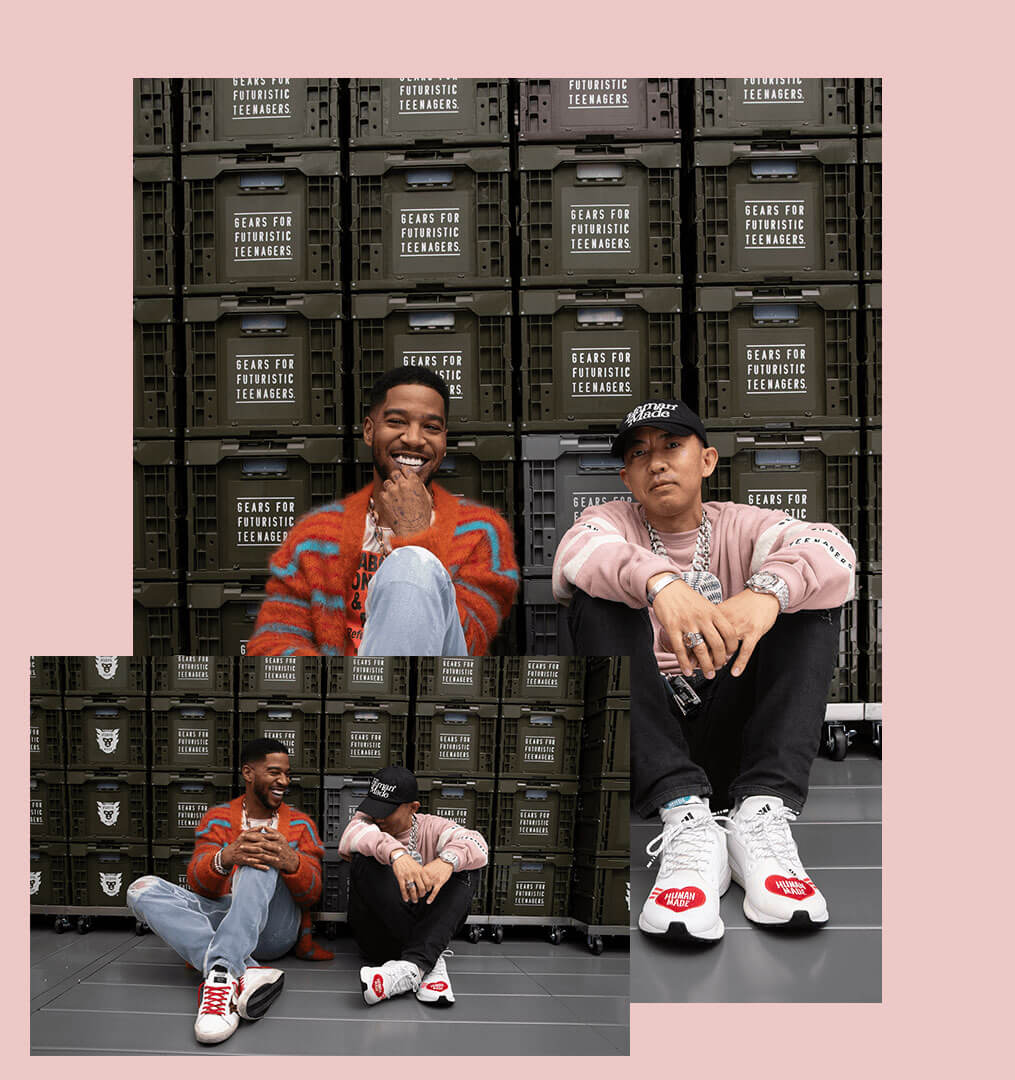
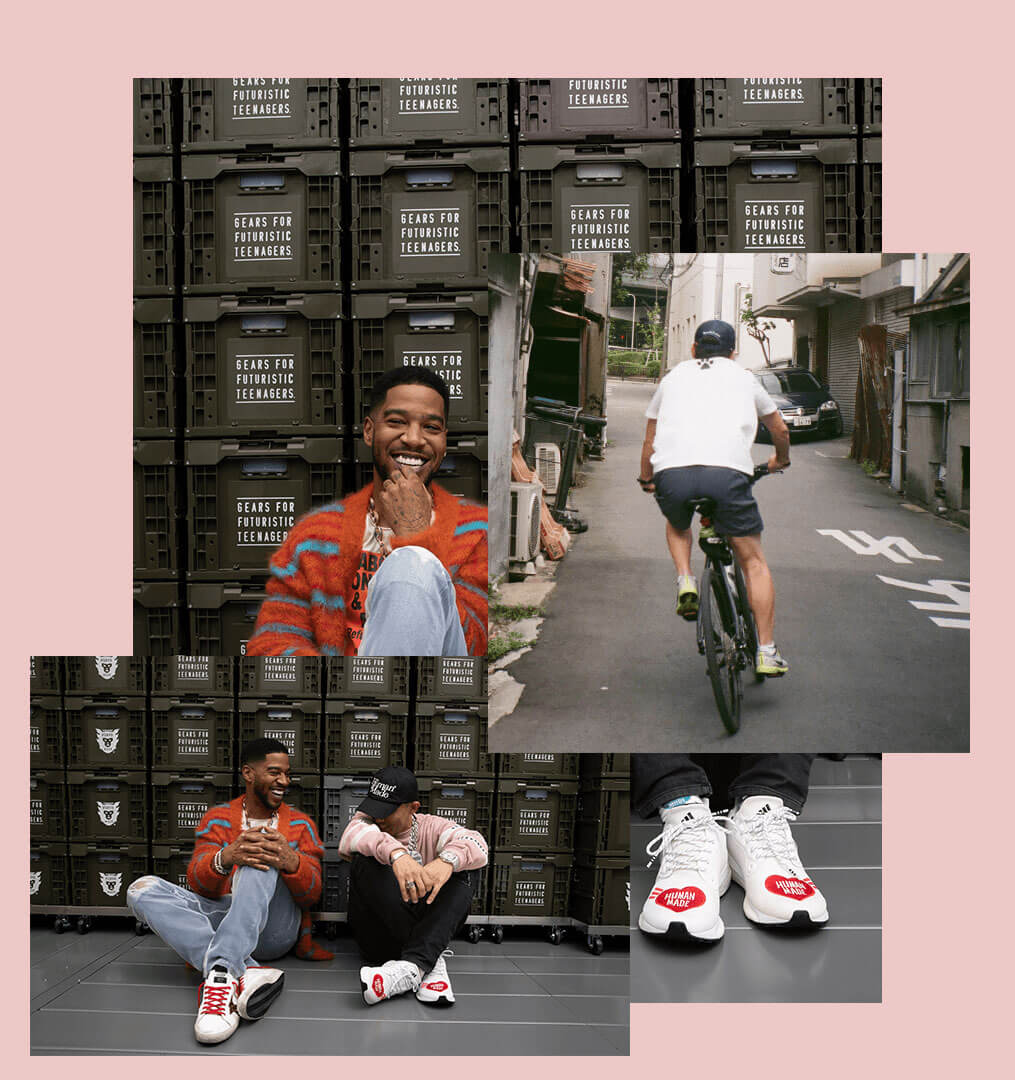
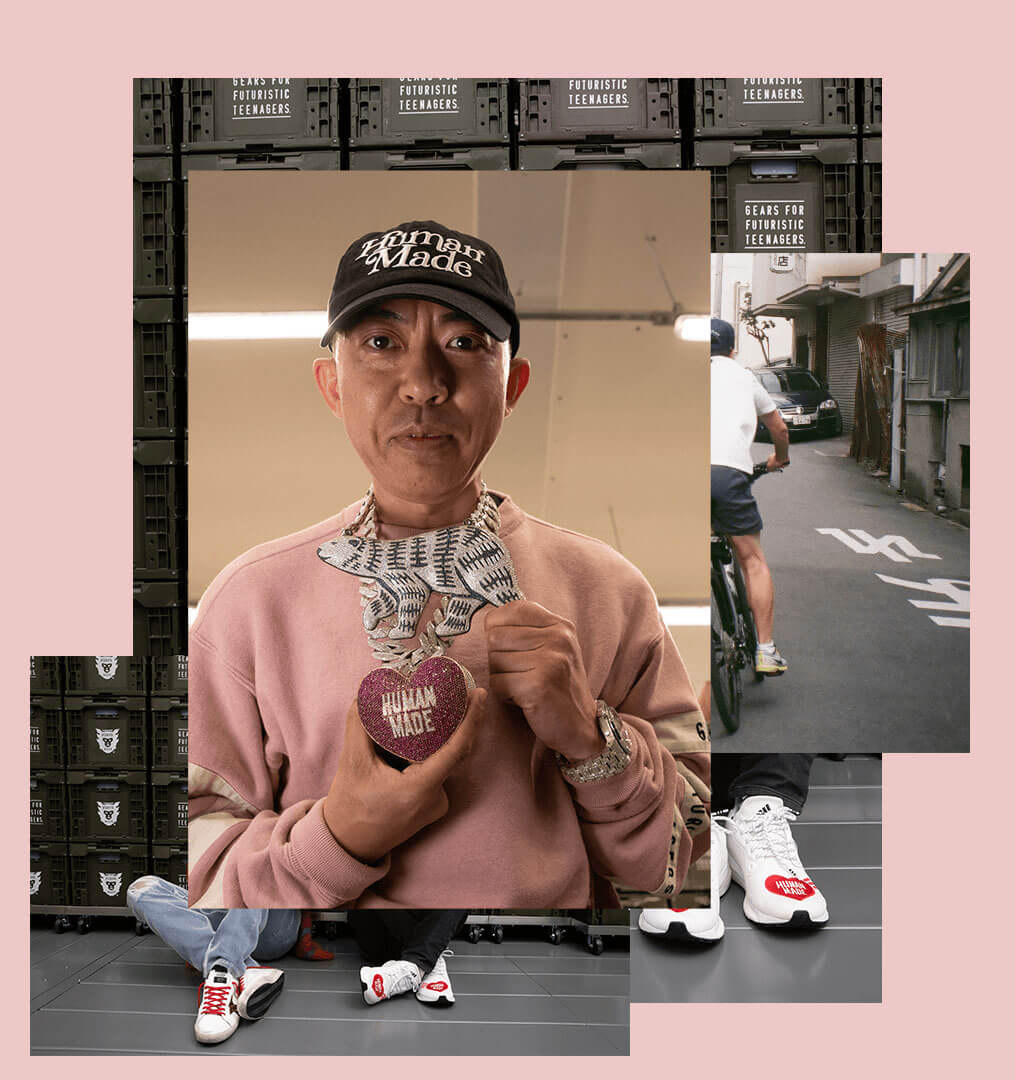
“I can’t believe this,” he says as he flashes a smile so wide his cheeks puff up. Right now, he’s geeking out over NIGO®’s massive diamond-encrusted chains. One by one, NIGO® unloads his Jacob the Jeweler creations from his custom white and grey Goyard jewelry box, which features hand-painted insignias from his Human Made brand (he left Bape in 2013), and clanks them down on the table. First, it’s the white and blue Human Made polar bear that’s nearly half the size of Cudi’s head. “This is sick,” Cudi says, as he lets out a laugh, nearly in disbelief of what’s in front of him. He then surveys a red Human Made heart, which hangs from a thick Cuban link chain and is probably only slightly smaller than the size of an actual human heart. Cudi holds each with delicate care, as if he were carrying an infant. After all, these are worth hundreds of thousands of dollars and, more importantly, belong to one of his heroes.
But his fandom is less that of a sycophant and more that of someone with a genuine, childlike admiration for a person he’s idolized most of his life: He’s just happy to be in his presence and eager to support him. For instance, the day before the photoshoot for this cover, he repeatedly told the stylist that he wanted to wear Human Made and, for the next two days I’d see him, would make it his uniform. At one point, before our interview, he turned to his manager and asked where the various autographed magazines, books, and Human Made catalogs NIGO® gave him were. He really didn’t want to forget them. His manager grabbed them and parked them on his lap for the next hour or so, as if he were guarding precious cargo.
“He’s an originator, and that inspires me,” Cudi says of NIGO®. “I always wanted to create my own sound, so anybody that I see doing their own thing and leading the charge in their lane, I have so much respect for them.”
To some, Cudi and NIGO® may be an unusual pairing—they’re from different worlds, speak different languages, and are more than 10 years apart in age (Cudi is 35; NIGO® is 48). But they share common ground. After breaking out with “Day ‘N’ Nite” and his seminal mixtape A Kid Named Cudi in 2008, the Cleveland rapper ushered in a new sound and sensibility in hip-hop by fusing rap with alternative and electronic music, and subsequently paved a lane for rappers who saw melodies as being as important as bars. He accomplished all of this while making introspective and honest music that either made you want to rage or cry, but that many could relate to.
NIGO®, who launched Bape in 1993 at Nowhere, the store he opened with Undercover’s Jun Takahashi in Harajuku, helped lay the foundation of streetwear. A visionary and master curator, he was the first to position streetwear as luxury, changed retail experiences by building immersive stores (often with prestigious Japanese design firm Wonderwall), made a science of low supply/high demand, and pioneered the art of collaboration (well before both made up the formula for many streetwear brands). He had an innate ability to bridge “high” and “low” and distill various cultural references into highly covetable pieces. Think the Bapestas that played off the Nike Air Force 1 or, more recently, a pair of sold-out satin Human Made shorts inspired by traditional Muay Thai shorts.
Individually, Cudi and NIGO® helped shape their respective fields. Together, they—alongside guys like West and Pharrell—defined popular art in the mid-to-late 2000s. Now, there’s a new generation of artists dominating pop culture who call them their biggest inspirations.
“[NIGO®’s] attention to detail, his taste level, his absolute quest for flawless perfection in anything he does is shocking,” says Pusha-T. “He’s the master of taste and design.”
“I'm super appreciative of everything [Cudi’s] done and for being himself, because it helped me grow up as a man and opened up my creativity,” Lil Yachty says. “He’s a big part of why I wanted to act, because he started acting. Even with modeling. I definitely appreciate him for being him so I could be me.”
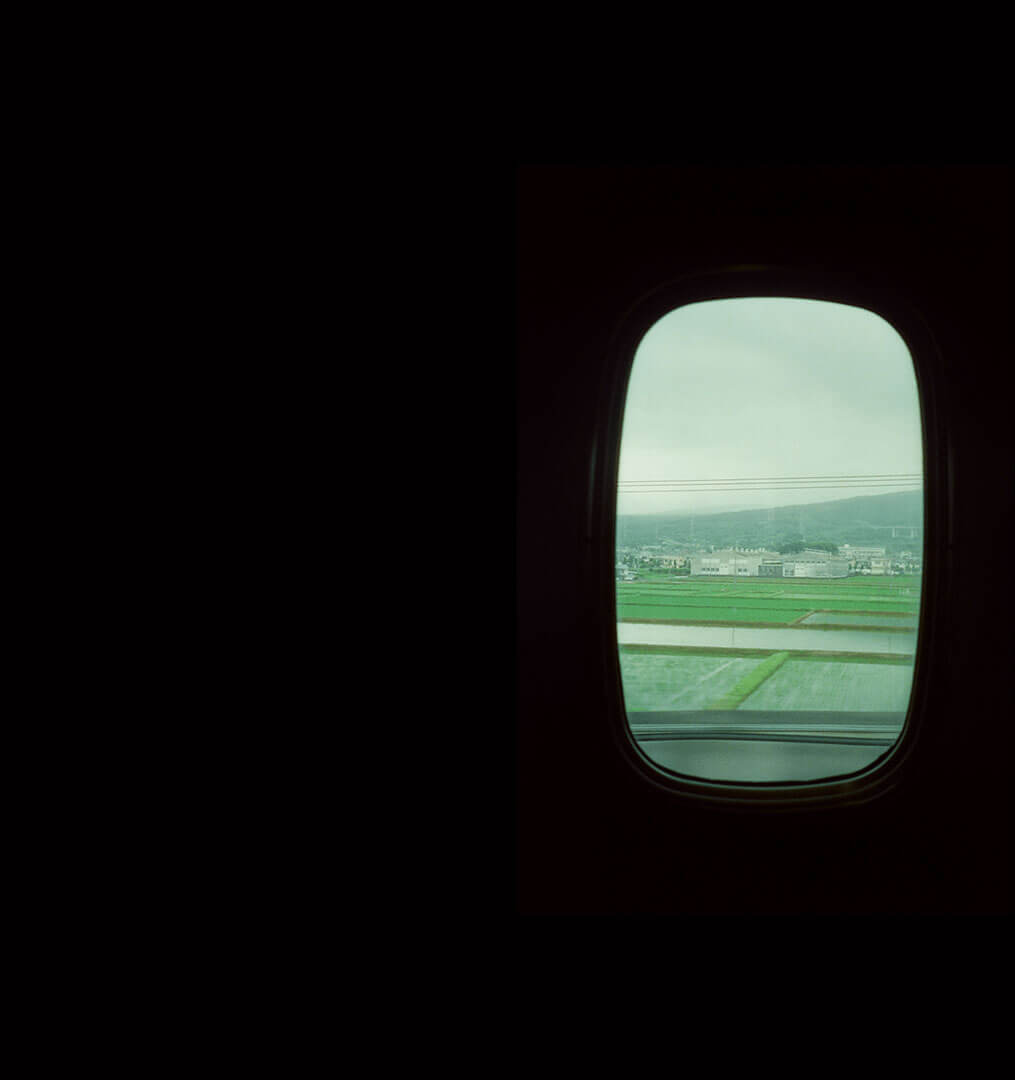
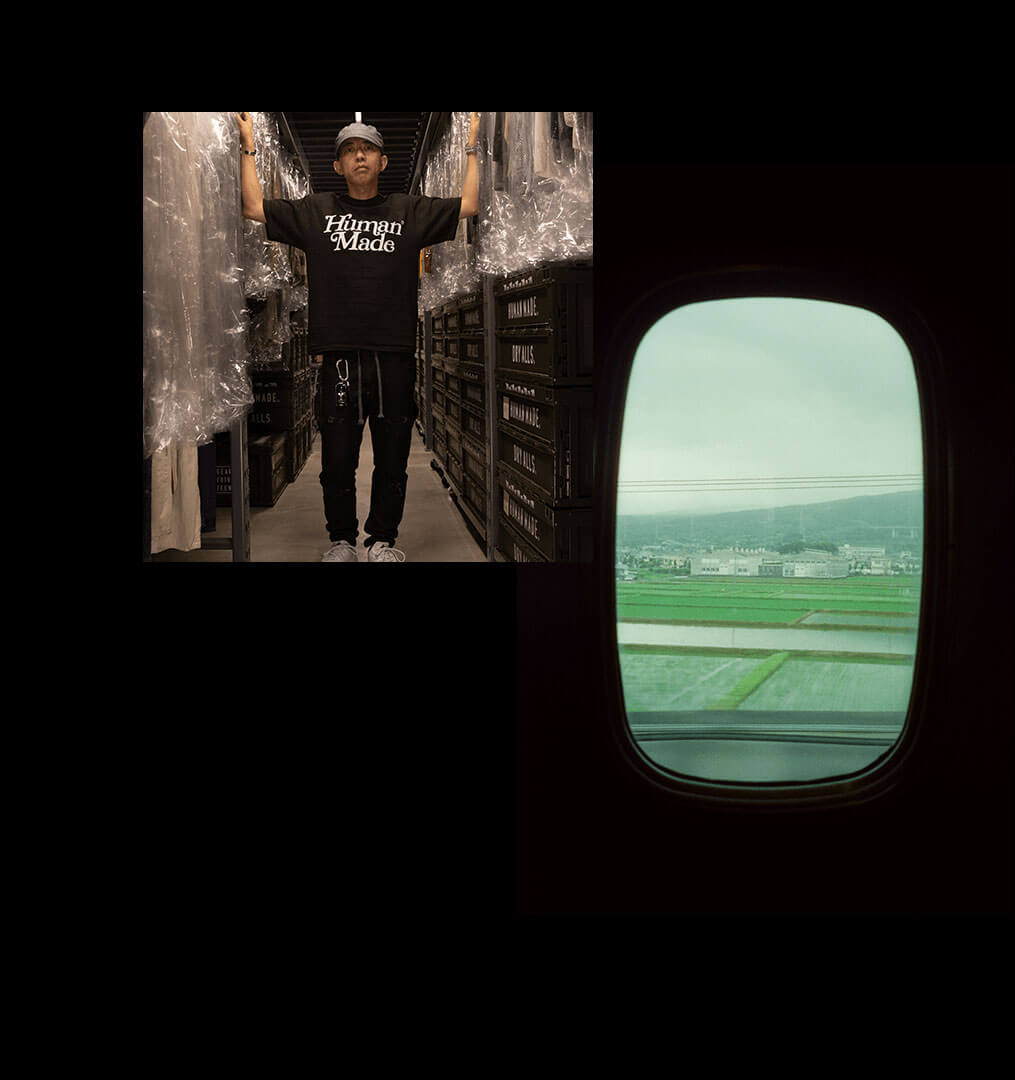
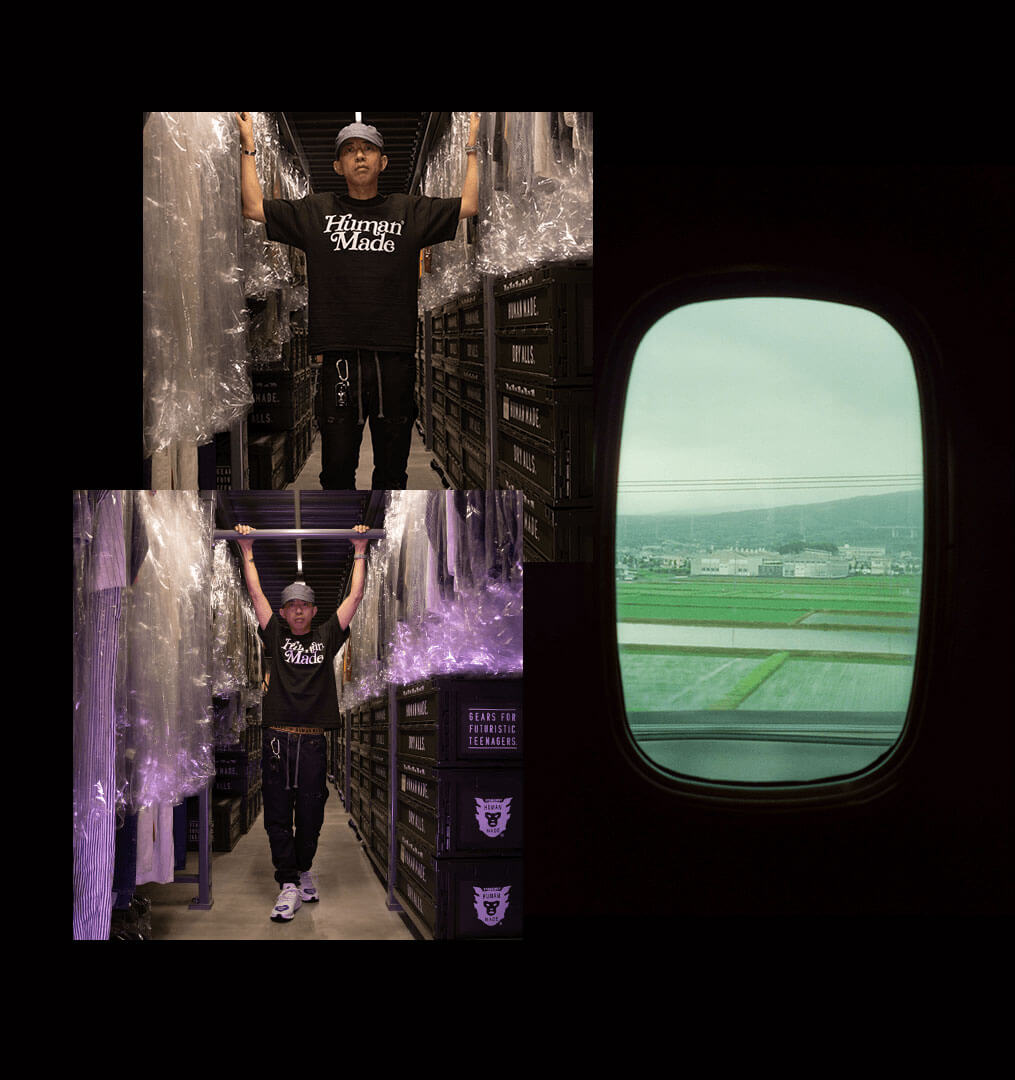
There’s been a lot of talk about the merging of streetwear and luxury, but it’s important to acknowledge what you did for the space, NIGO®. You were early in working with Fendi and Louis Vuitton. You were one of the first to really position streetwear as luxury. What was it like for you working in high fashion at that time?
NIGO®: That’s a tough question. In my day, there were very few people in the high-fashion world who really got streetwear. Today, everyone gets it. I feel like the generation before me, the older generation, were the ones who planted the seeds, and I cultivated those into something, and then someone today is now taking that fruit from the plants and turning it into something new.
Did you face any challenges? Did you feel like high fashion was as welcoming then as it is now?
NIGO®: Well, the thing is, I wasn’t really paying attention to couture brands or high fashion at all. But to take one recent example, Virgil becoming [men’s] artistic director of Louis Vuitton felt like a victory, so to speak, for our team, the streetwear crowd. I’d consider that a success, like we finally earned it. I’m not responsible for creating streetwear alone. It’s something we all played a part in, in building up the culture. It’s finally bearing fruit.
Speaking of Virgil, Cudi, you walked in his debut fashion show. What was that experience like for you?
Kid Cudi: I was very nervous, but it was unreal. I never thought I would be walking in a show that big. But to see Virgil execute at that level and do it the way he did it is just unbelievable. It is a victory for Black excellence, for streetwear, for all designers out here that just have a dream to design. Virgil’s whole plight is that of someone who made something from nothing and made their own thing. And to me, that’s the most inspiring type of story there is—somebody that came up doing their own thing, being innovative and changing the game. No matter if he was working with Kanye or he was doing his own thing, he’s always been ahead of the curve. I remember when he designed my album cover for WZRD. That was way before anybody was even on Virgil. I knew he was this really dope designer, so I was just like, “Yo, dude, can you design my album for me?”
Did Virgil just call you and say, “Hey, you want to walk in my show?”
Kid Cudi: I think I asked him. I just texted him and was like, “I was thinking about it—can I walk in your show?” And he was like, "Sure." And I was like “Holy shit.” Next thing I know, I get an email from the people at Louis Vuitton to come in for a fitting.
Both of you have inspired so many people, and you can see your imprints in a lot of what exists today. How do you feel about people running with your blueprint?
Kid Cudi: It makes me feel like I’m doing something right, like I’ve always been doing something right, because when you first start out, you’re not sure. I wasn’t really quite sure how people would respond to my first album. I thought a record like “Pursuit of Happiness” was strange. I thought it was really weird at the time, and it was, sonically, especially compared to all the other music that was out at the time. My album was sonically very different from anything happening in mainstream music. So it’s overwhelming, but it gives me that co-sign that lets me know that I’m on the right track. But it also adds a little pressure to maintain that, ’cause I always have to be a step above the curve. It also adds a lot of pressure when I’m making music. I’m like, “Does this sound old, or does this sound dated?”
Right, because other people are doing it now.
Kid Cudi: Right, and I feel like it’s my job to always introduce something new to the world.
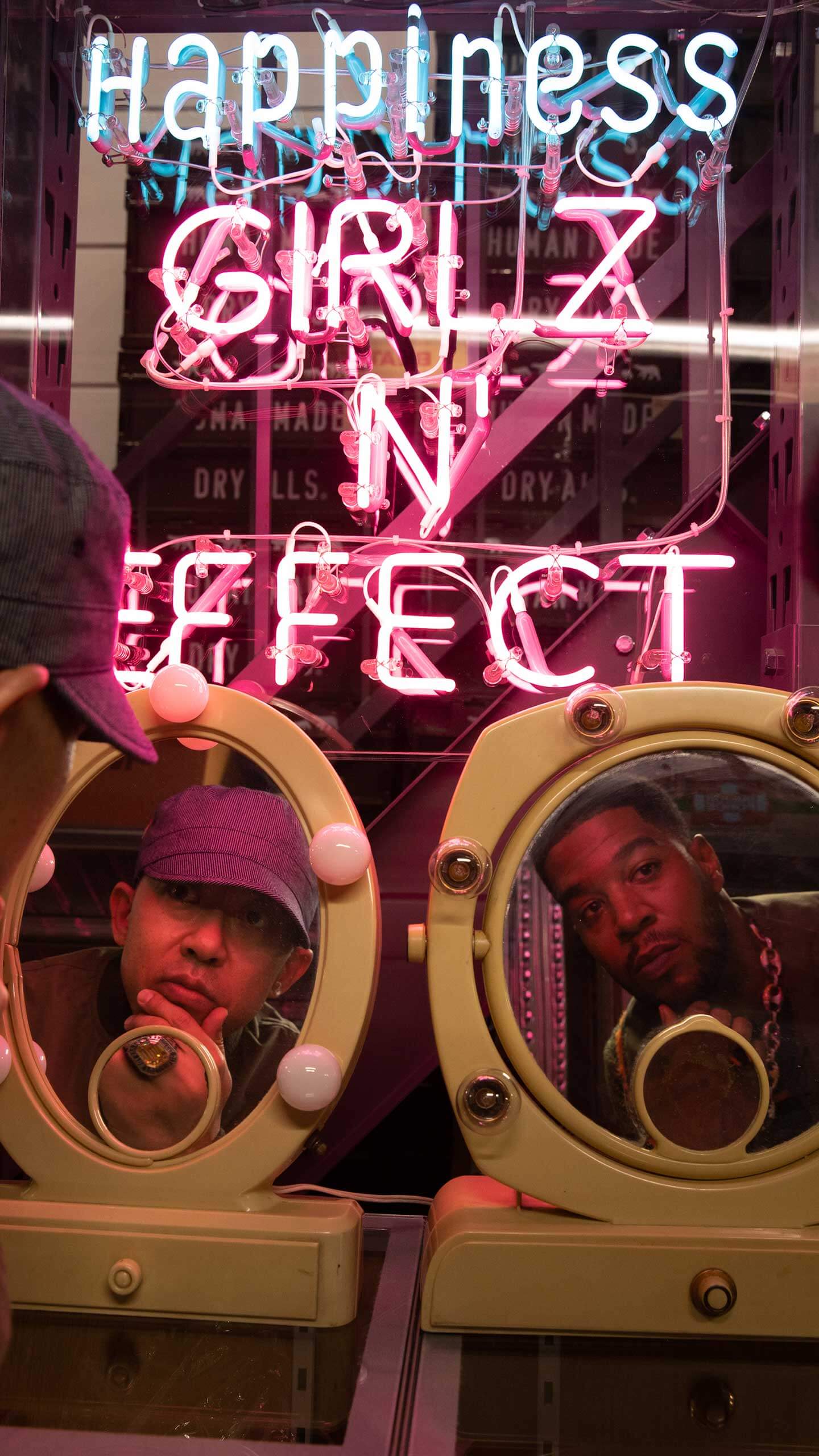
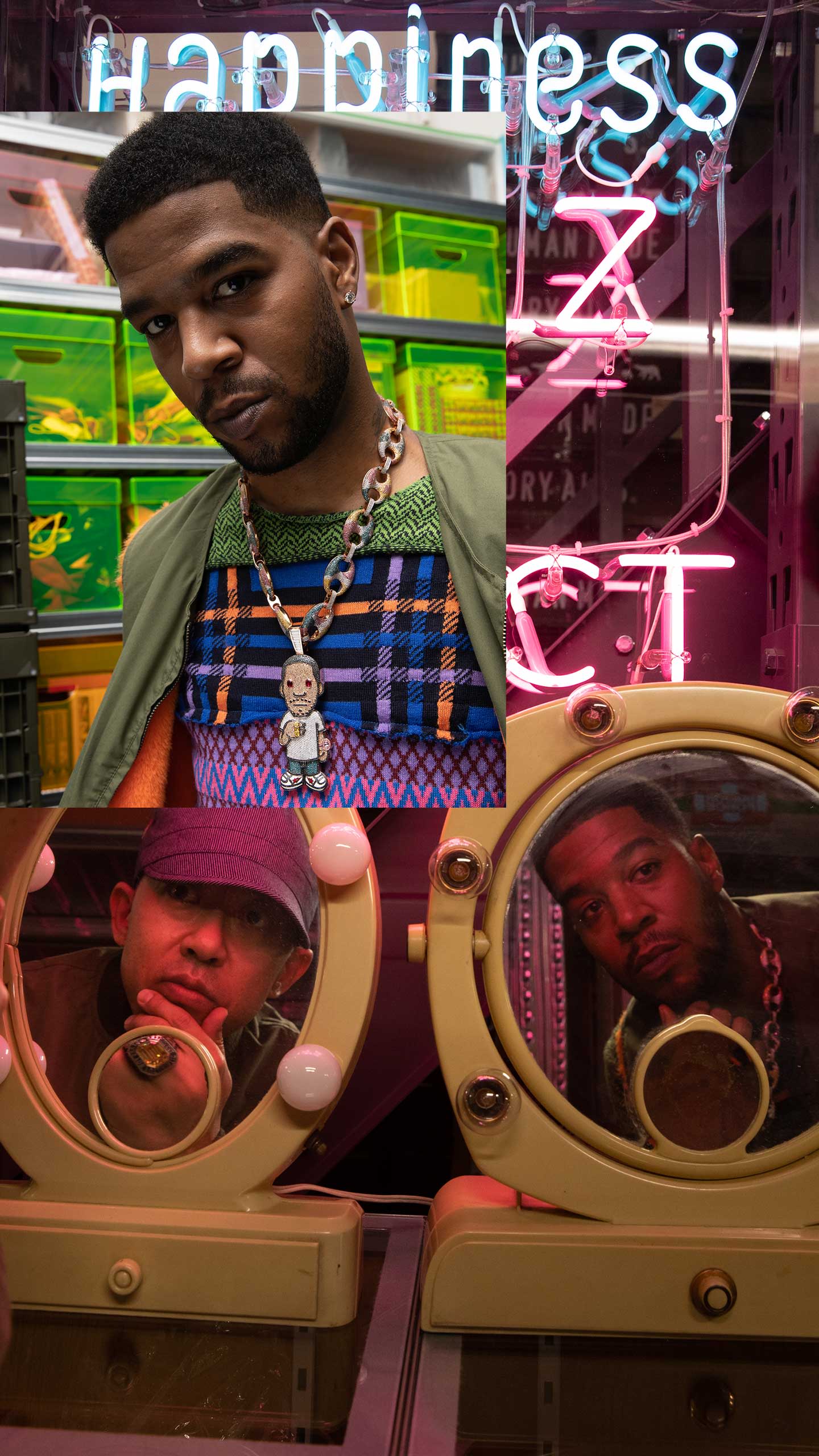
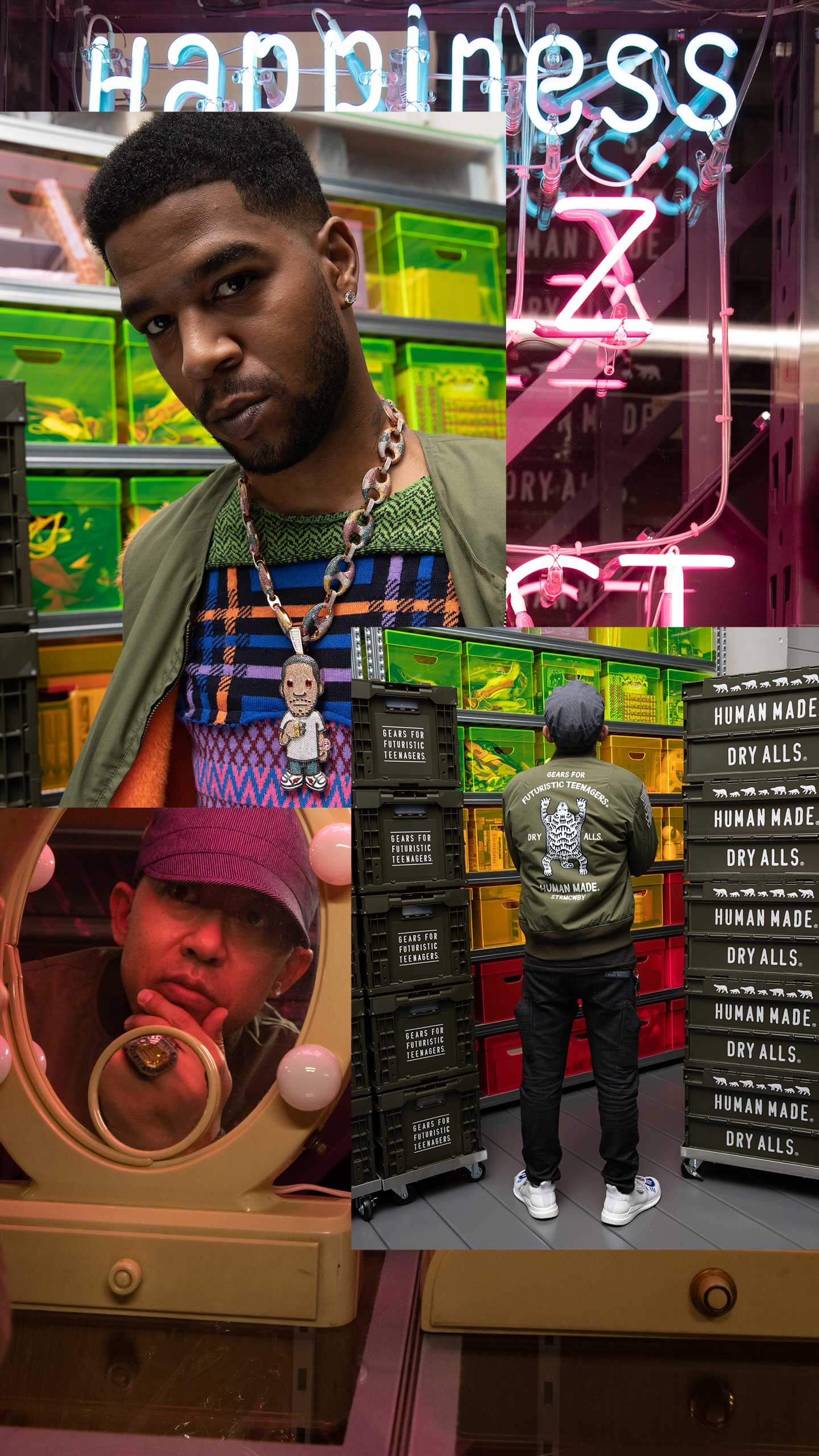
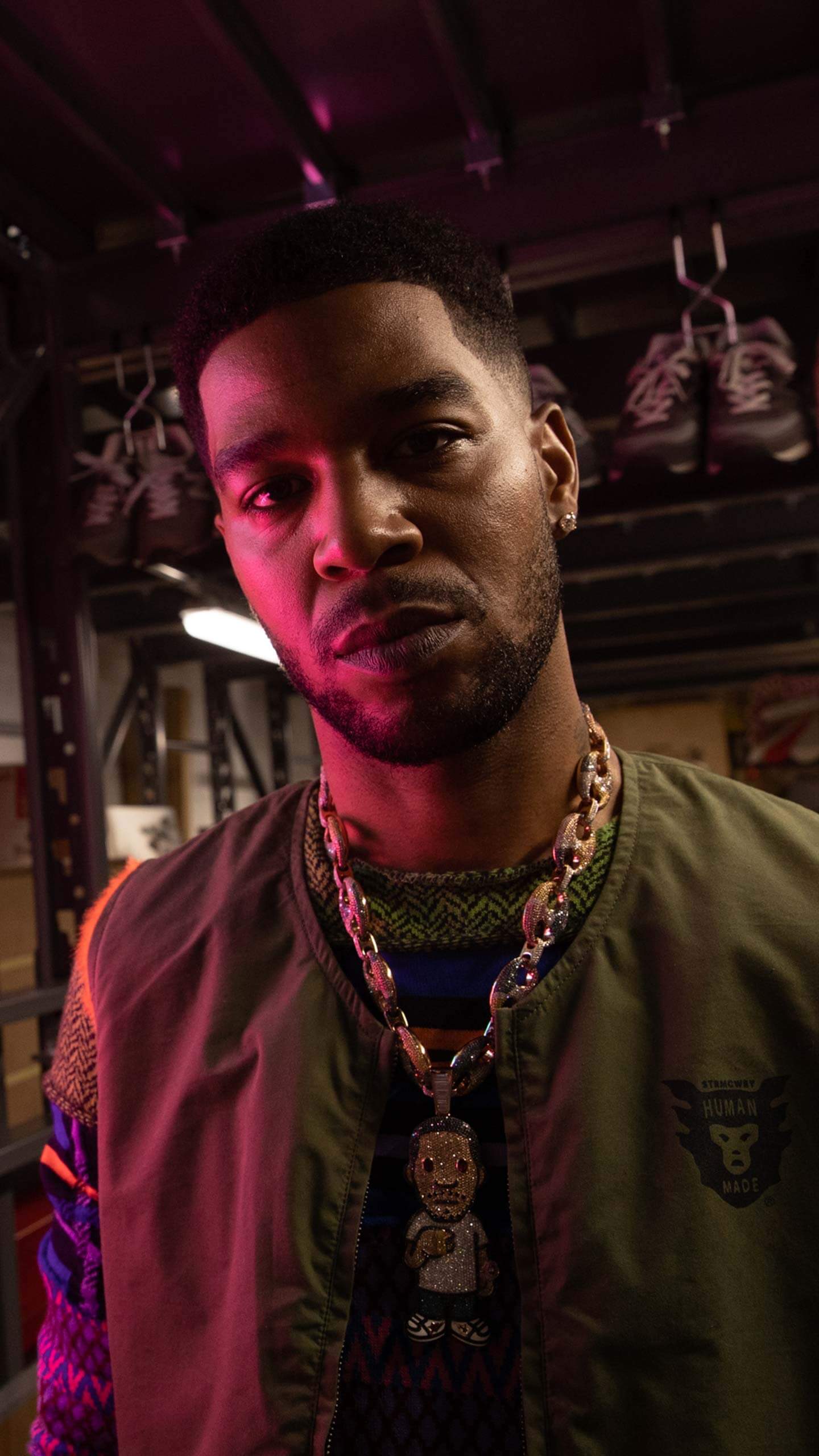
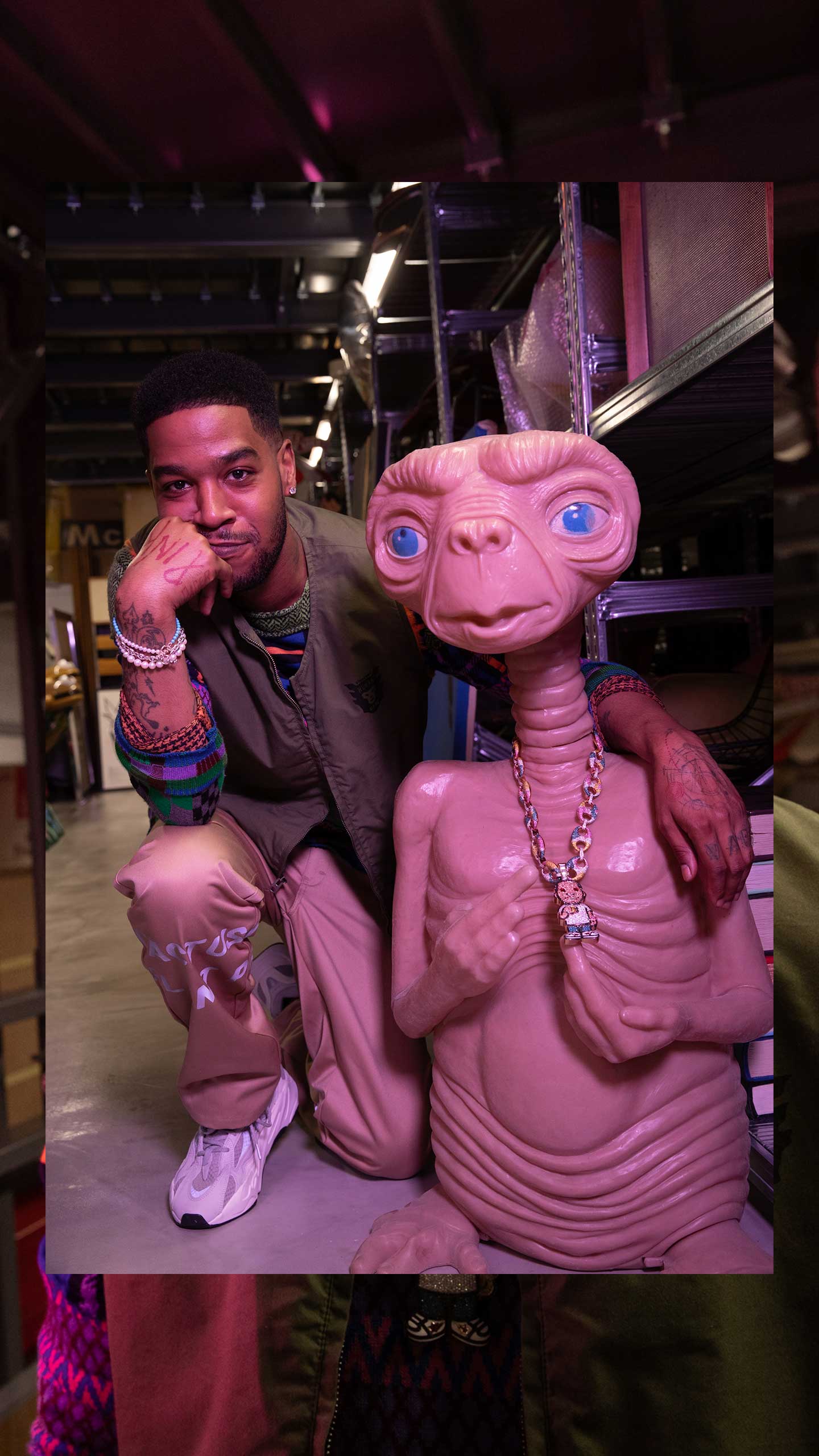
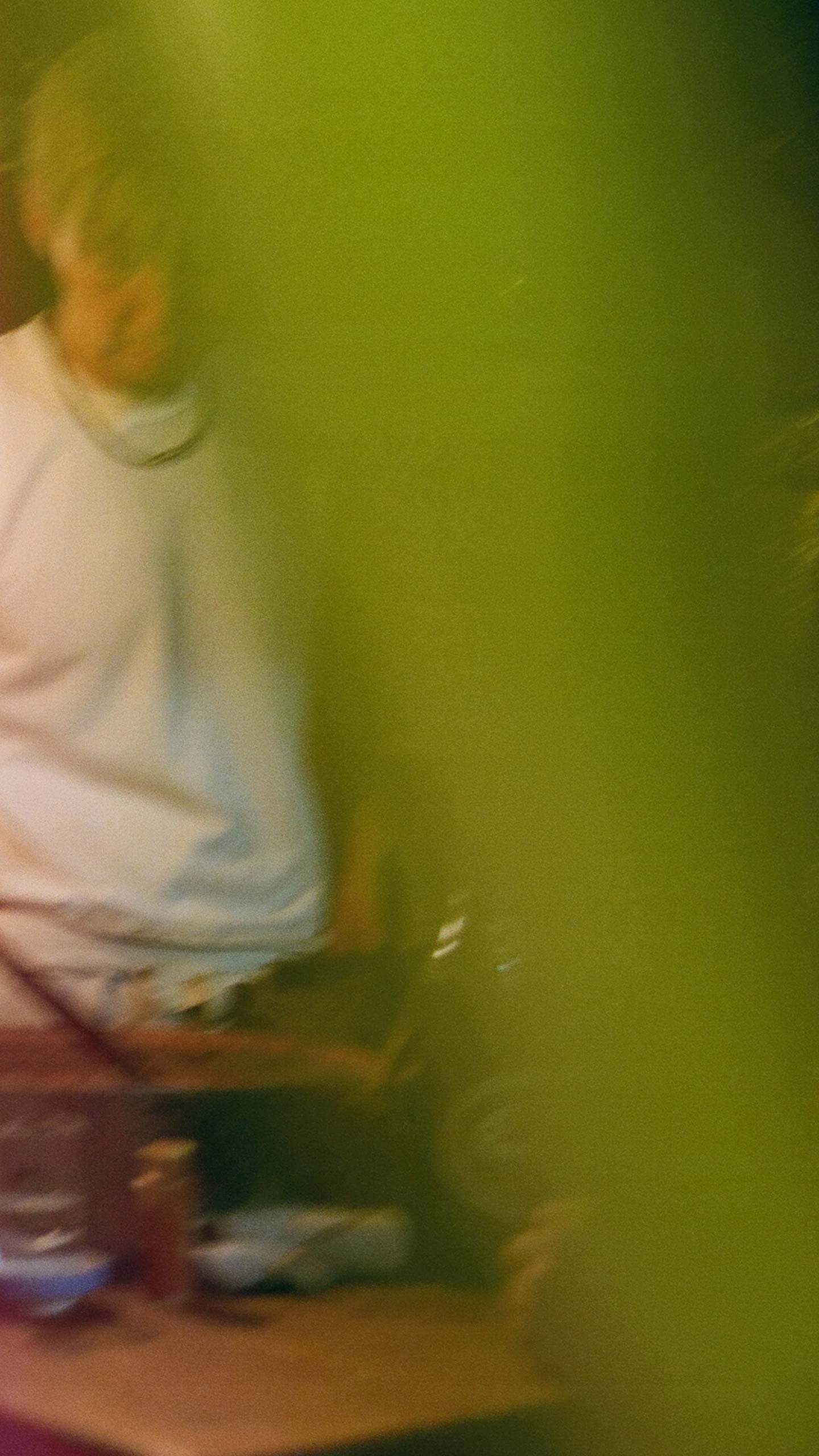
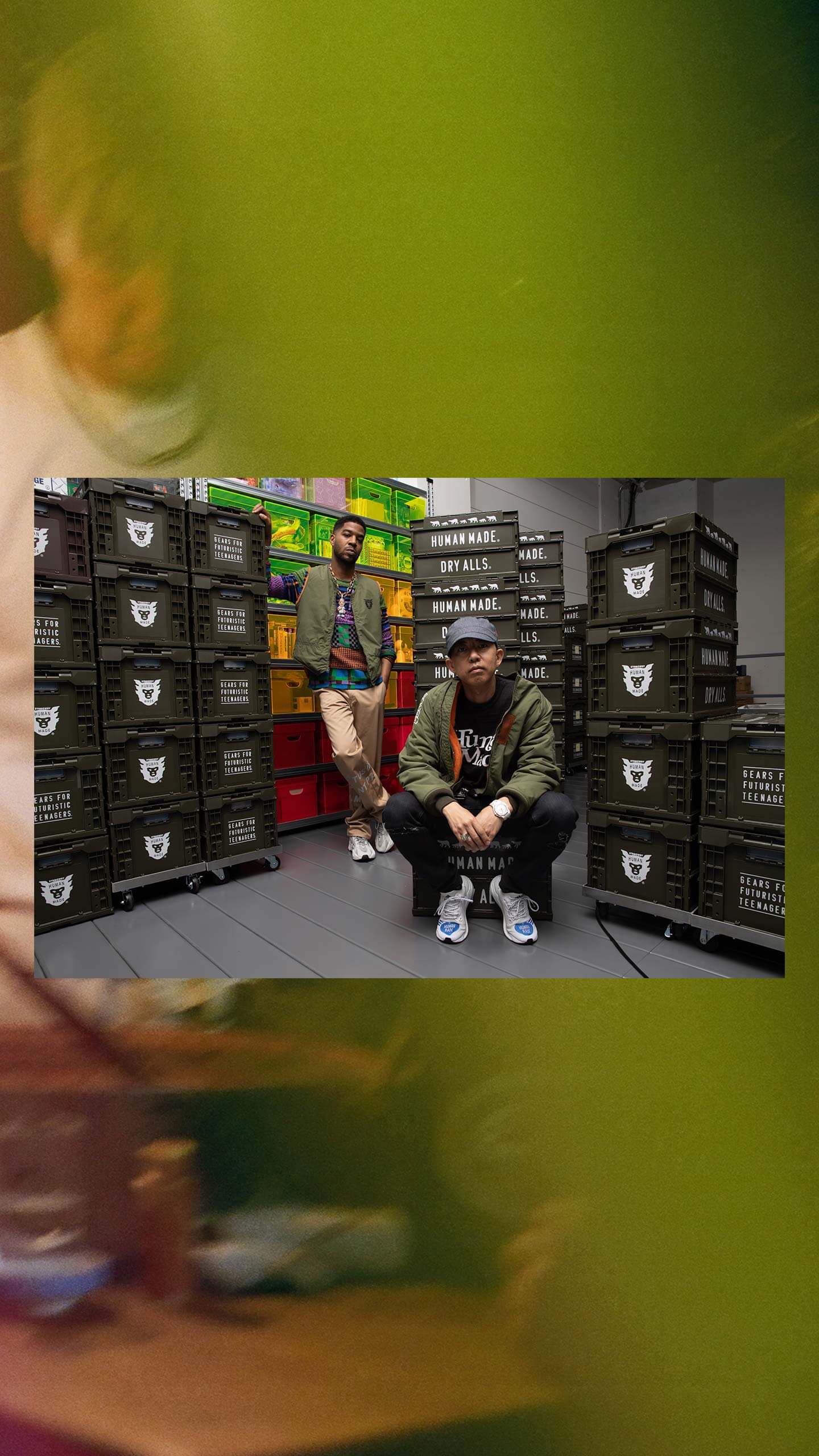
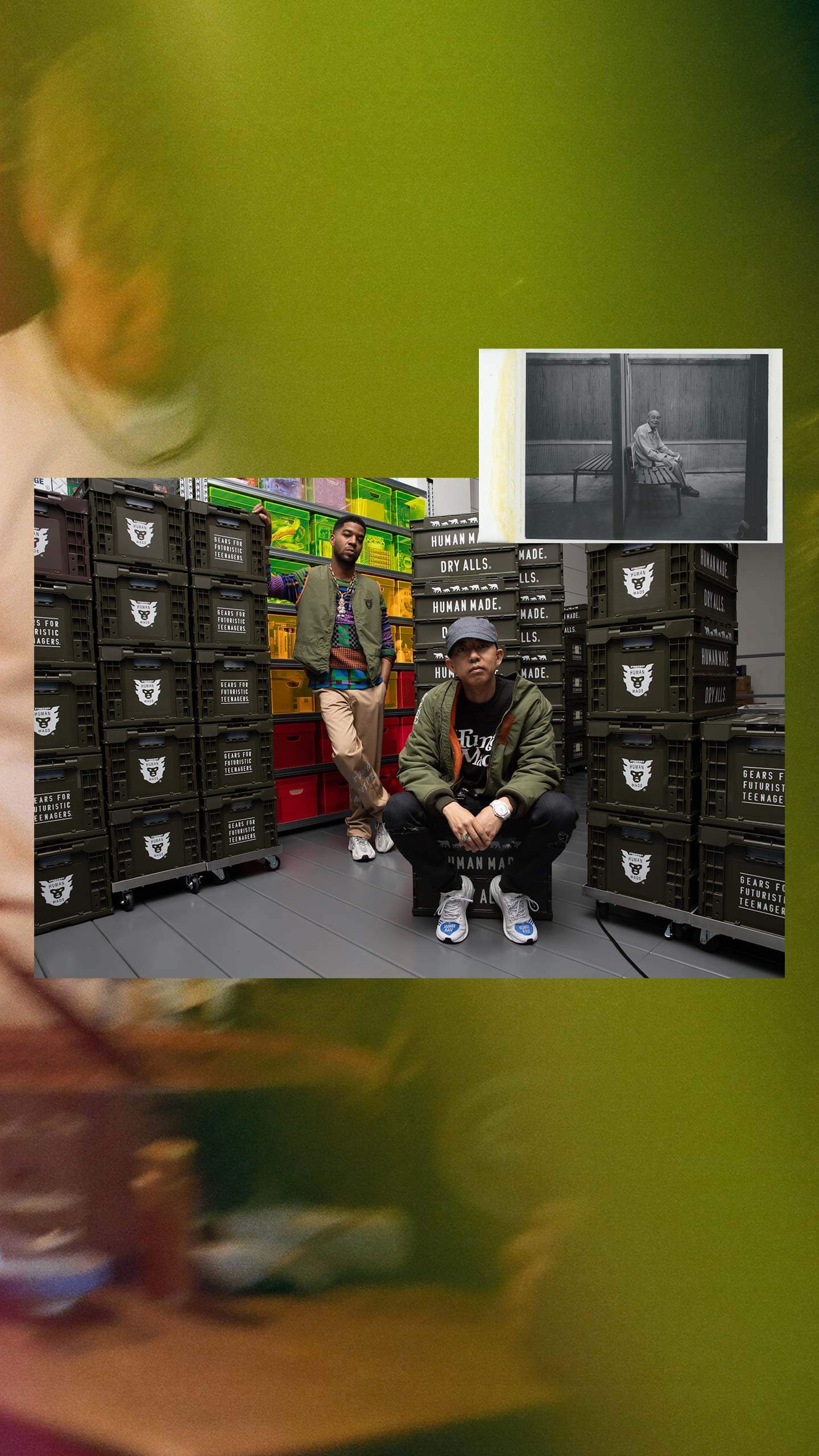
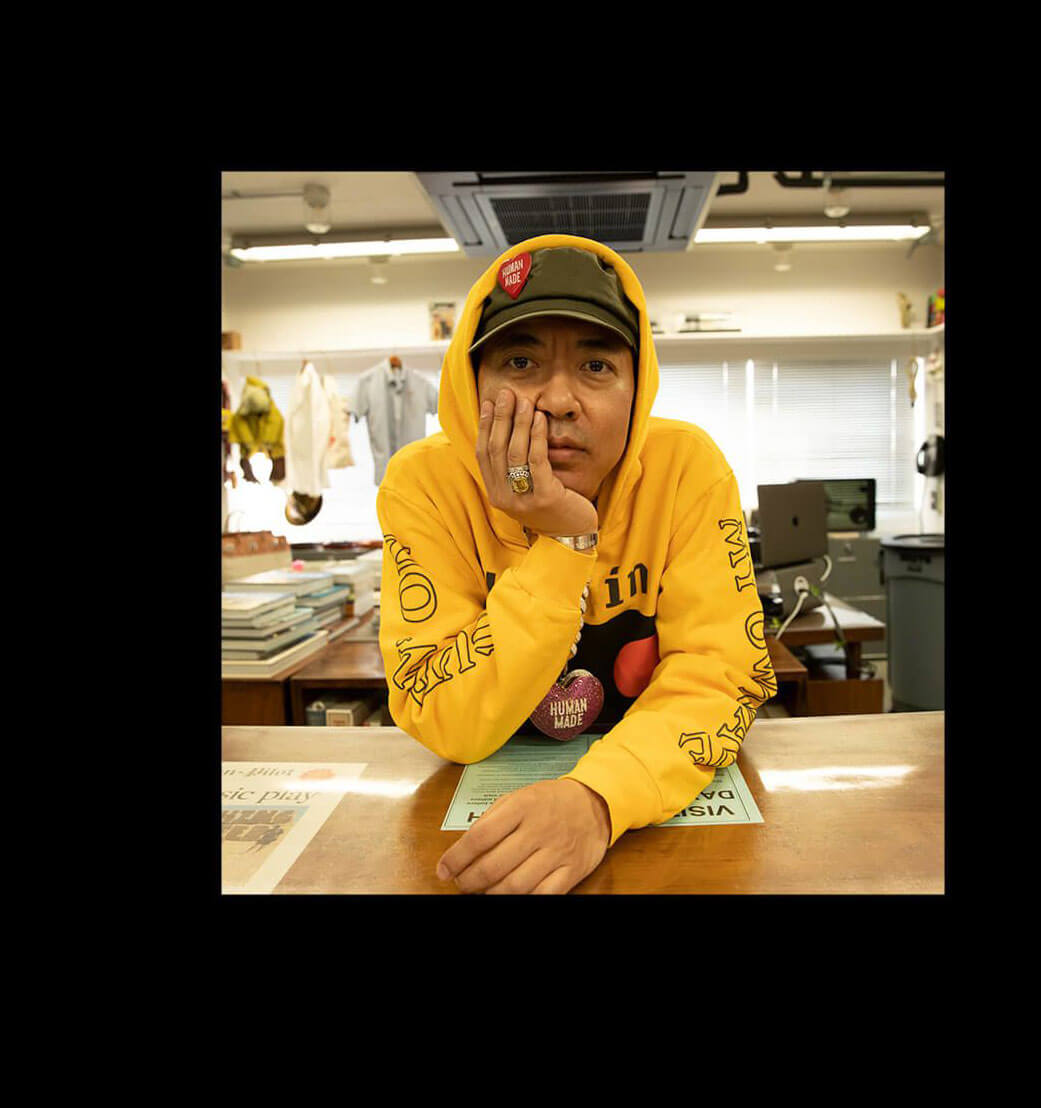
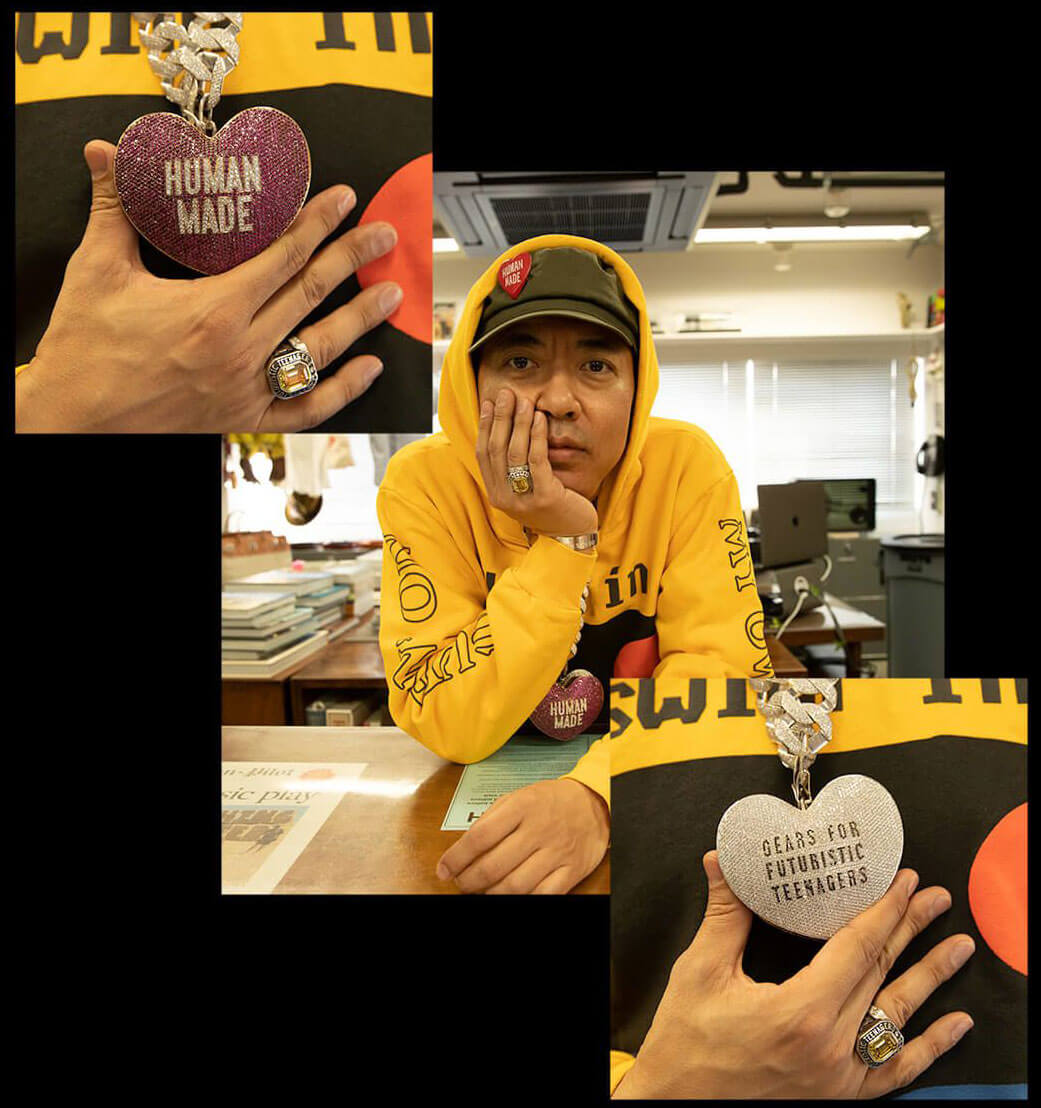
There’s a generation of designers coming up now who have no formal training but are penetrating high fashion. Growing up, did you feel like that was something that you guys could do?
NIGO®: I don’t think you really need to study fashion to be good at it. I studied fashion and editorial work, but not actually making clothing. I think it’s something you find in other fields, as well, like architecture. Oftentimes people who are not formally trained are more successful. So I think it’s quite welcome to have people picking up and trying things their own way.
Kid Cudi: When I was younger, I never had dreams of having my own clothing line. Maybe when I got older and started to get this crazy idea to become a rapper, that came with me thinking about all the things that I could do through that one thing, like acting or fashion. I was like, “Maybe I should study fashion,” but then I was just like, “Not really.” I’ve been doing good without it, and I feel like I have good enough taste and I trust my decisions. I did two or three shirts with NIGO® when he was at Bape. So that was, early on, me getting the feeling of designing a little bit. And then, more recently, I did A.P.C.
Which was long overdue.
Kid Cudi: Right. People ask me a lot why don’t I have a clothing brand. I’m just being really patient. I have a lot of time to figure that out, and I feel like I have a lot to learn. I’m learning while I do these collabs. Now, I’m doing this collaboration with Adidas and learning how to design shoes. I begged NIGO® today to do something with Human Made.
NIGO®: I had no confidence [when I was] starting out. My clothing wasn’t selling at all. But I was already working as a stylist and DJ, and it was putting food on the table, so I started making clothes for fun. Coming at it as an amateur was helpful. I didn’t do things by the book, which created something that was totally different, and it just happened to be a good fit for that time. I mainly think I was really lucky to be in the right place at the right time.
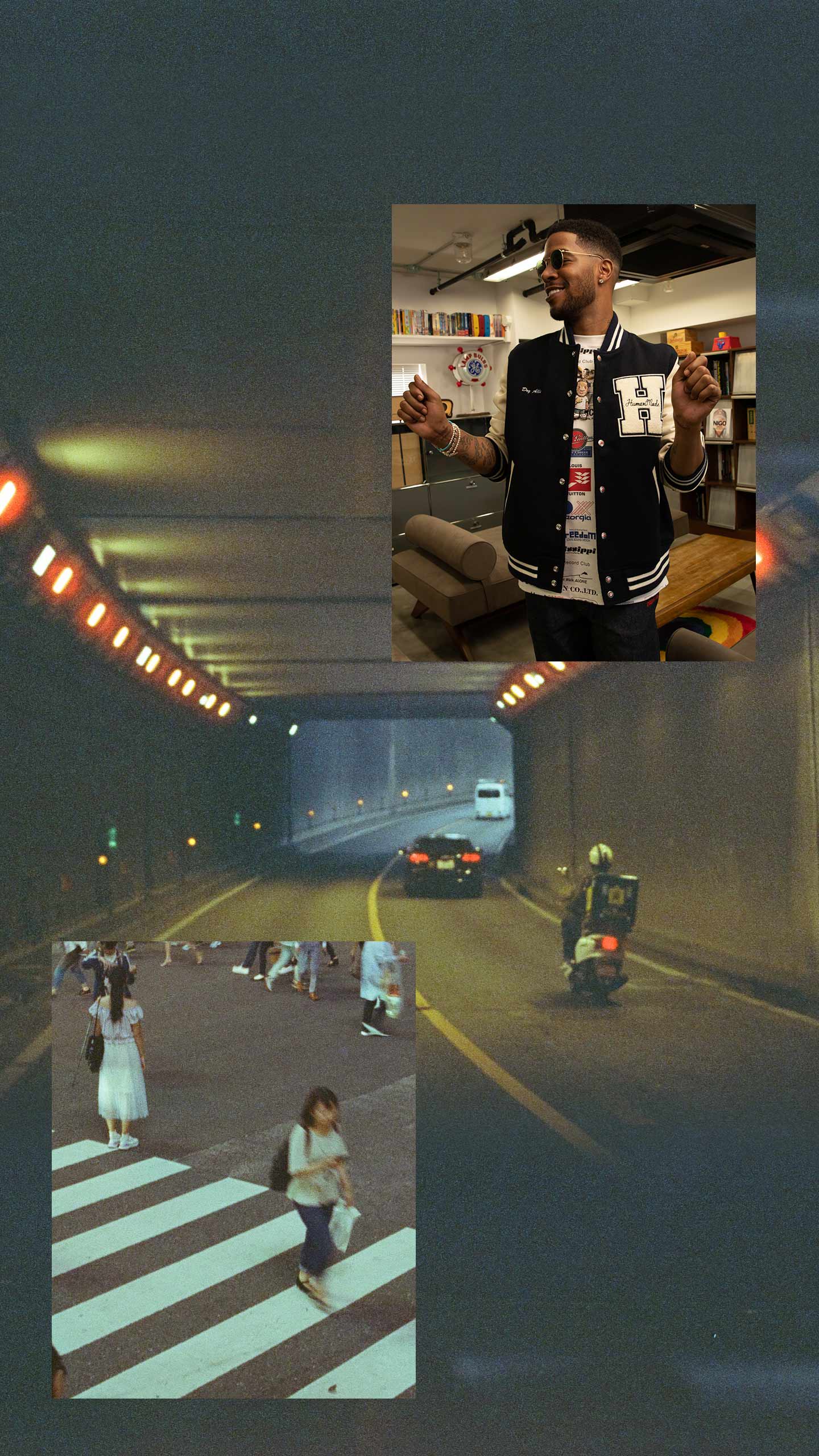
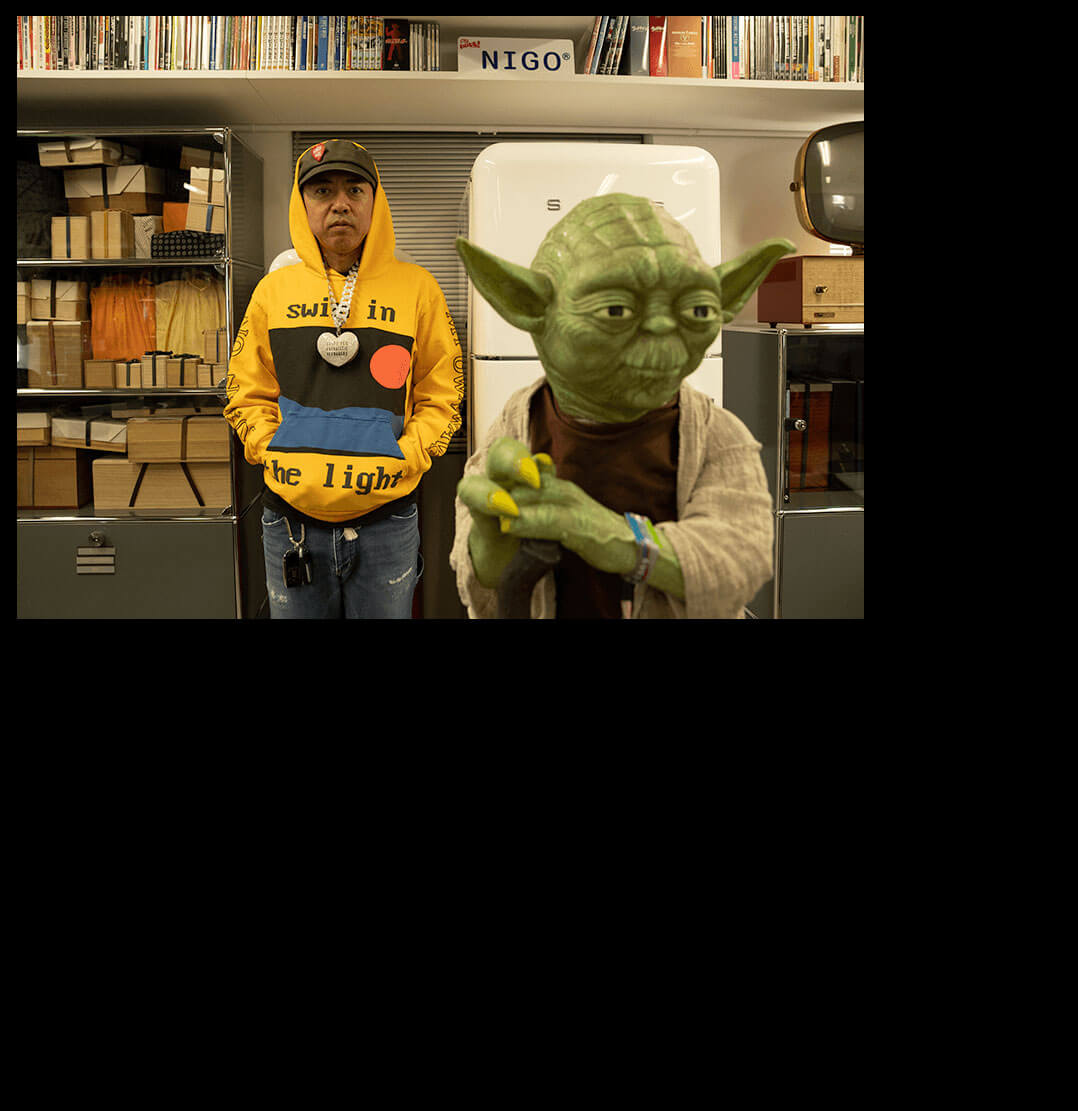
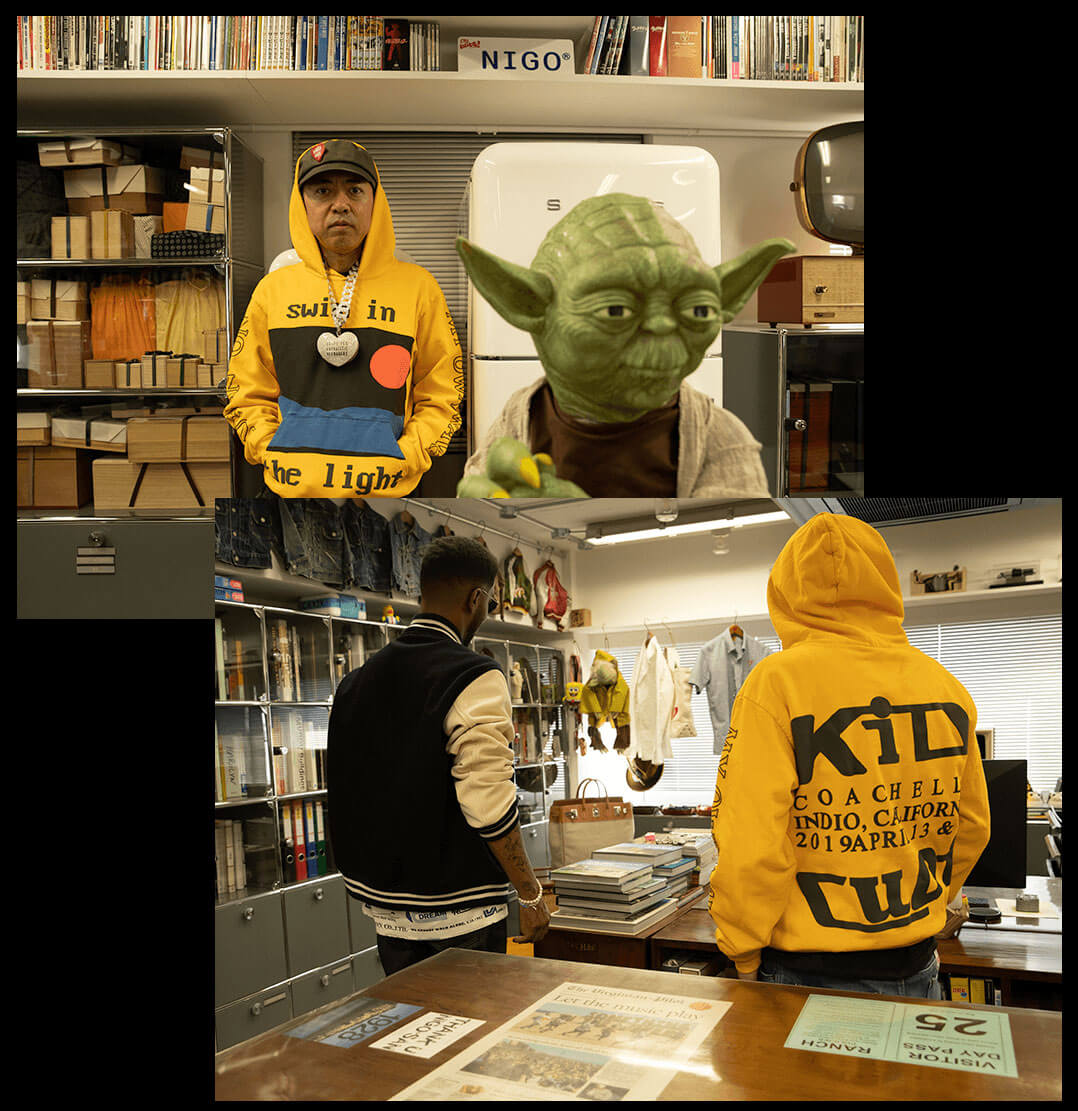
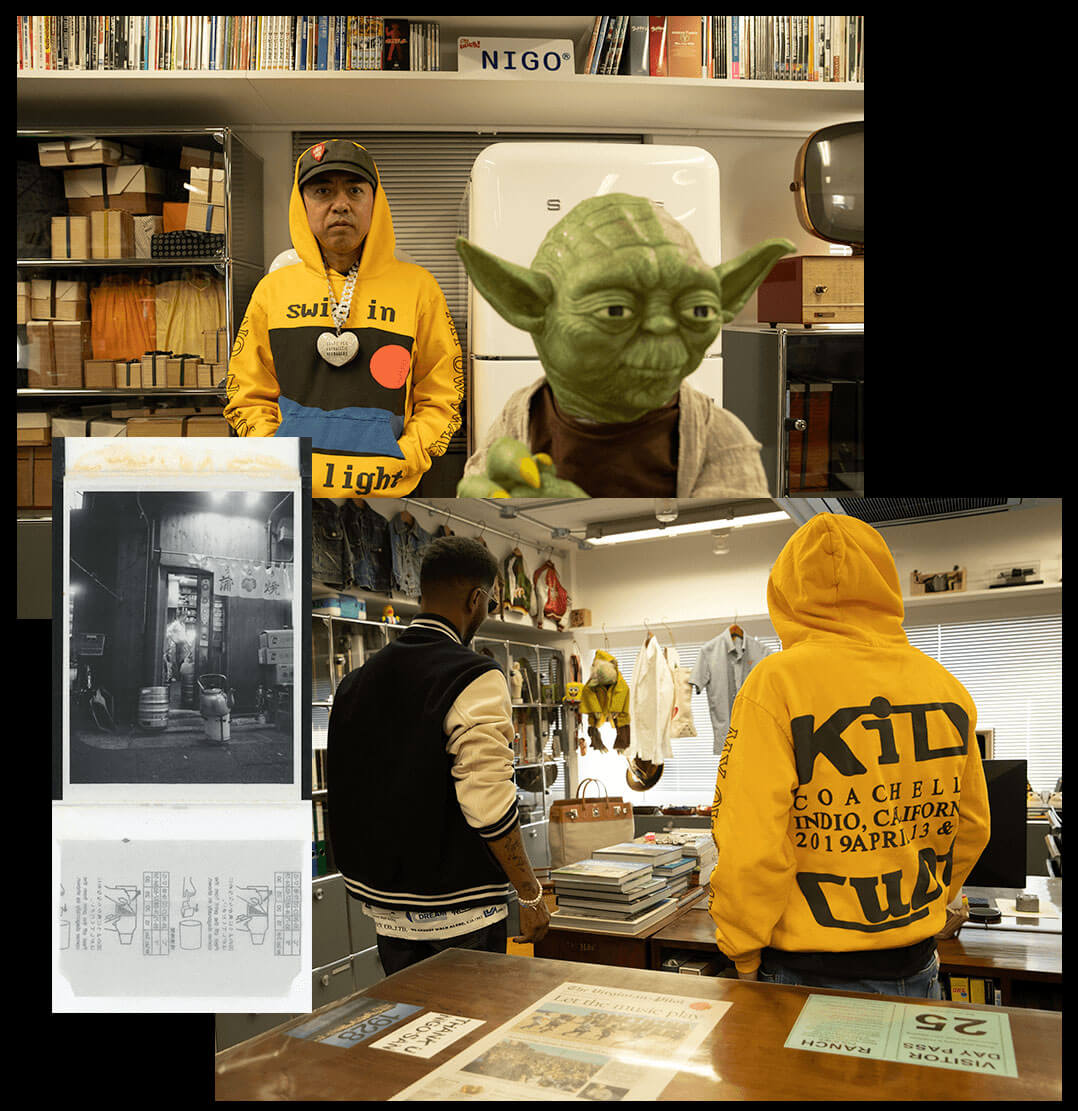
It’s kind of crazy to think that your clothes weren’t popular at one point.
Kid Cudi: Yeah, exactly.
NIGO®: No, really. There was no interest at all at first. But looking back, it feels like the clothes I was making were the Levi’s 501® of this generation, or like I was creating a sort of blueprint for the future. Even though I’m not affiliated with Bape at all anymore, it amazes me to see that it still sells like crazy and that people are still seeking it out. I feel like I managed to create something, almost like a universal design.
Both of you have worked with other brands—A.P.C., Adidas, etc. What do you hope to get out of those partnerships? What is the ultimate goal?
Kid Cudi: Just learn as much as I can about the fashion industry. Even something as simple as terminology. What’s this fabric called? The patch on a varsity jacket, what’s that? I didn’t even know it was Chenille. My friends had to tell me that. I was just like, “A varsity patch. You know, it looks like a varsity patch. Looks kinda like a rug.” You learn as you go, and that’s what I’m most excited about, just growing and seeing where I go with it.
NIGO®: You know, it’s funny. I think people probably associate me with a lot of collaborations, but take Human Made—we have almost no collabs.I only like working with people I’m interested in working with. There are so many collabs out there today, and a lot of them are bland. A collab should be something that adds a little spice or touch to an existing brand, not something where the whole brand exists for collabs. The mainline collection and core lineup is the most important. Take Cudi’s album—you aren’t going to see every single track have a featured artist. You have a lot of your own songs. As a fan myself, if I check the tracklist and there’s a song featuring Pusha-T, that’s really cool for me, but you obviously can’t have every single song be like that or it’s kind of boring. You can’t just rely on collabs. Nowadays, brands are way too reliant on that, and it makes headlines, so people go for it. But it’s not fundamentally attractive as a brand to focus only on that.
Yeah, you don’t want to lose your own aesthetic and DNA.
Kid Cudi: That’s how I felt with my Kanye features. Early on, I could have had Kanye more involved in my album, but it wasn’t about that at all. It was about me telling my story and me getting my sound out there. I had my single with ’Ye, but ultimately my albums were all me. I remember Jaden [Smith] and I were talking about collaborations years ago. This was early on; Jaden was, like, 15 or 14, something like that. I was telling him that maybe it’s best that you don’t collaborate with anybody, that you just make your songs and do that for a little bit, and then eventually you’ll find somebody you wanna collaborate with. But right now, you need to develop your sound and focus on that, and then collaborations will come when the time is right. The way the game is right now, everybody’s big on collaborations, and that’s cool—there’s a lot of great songs that come from collaborations. But we can’t forget about making an album that you wanna hear from beginning to end with no skips.
There’s not a lot of those right now.
Kid Cudi: Nah. I still go in the studio and have that in my mind—like, how do I make an album with no skips? Back in the day, you’d put on an album… I remember when God’s Son came out. I put on Nas’ album and I sat in front of the stereo and listened to every song. It was like my big brother putting me onto game. That’s important. People that are really eager to do collaborations, that’s a certain type of person. You could probably get your collaborations off, but then, when it comes to your own shit, you’re probably…
Not as good.
Kid Cudi: Yeah. Nah, ’cause you didn’t invest the time to perfect your sound.
NIGO®, one person you’ve collaborated with a lot is Pharrell. How have you felt fed by that partnership throughout your career?
NIGO®: I started to feel old, that I didn't have the same energy as when I was younger. That was reflected, I realize now, in how I'd been dressing—a bit more subdued, calm colors. Pharrell and I did an interview together a little while ago, and he was wearing something really bright and bold. As usual, he looked great. It clearly made an impact on the interviewer because they asked him about it and he said something like, “I always need to keep my mind and my heart young because that’s what it takes to be creative.” I felt that that was a huge lesson for me. I’d allowed myself to get into the wrong way of thinking about my life and career. It gave me the push I needed. I instantly felt like I had much more energy, and I was excited to get back to work on Human Made.
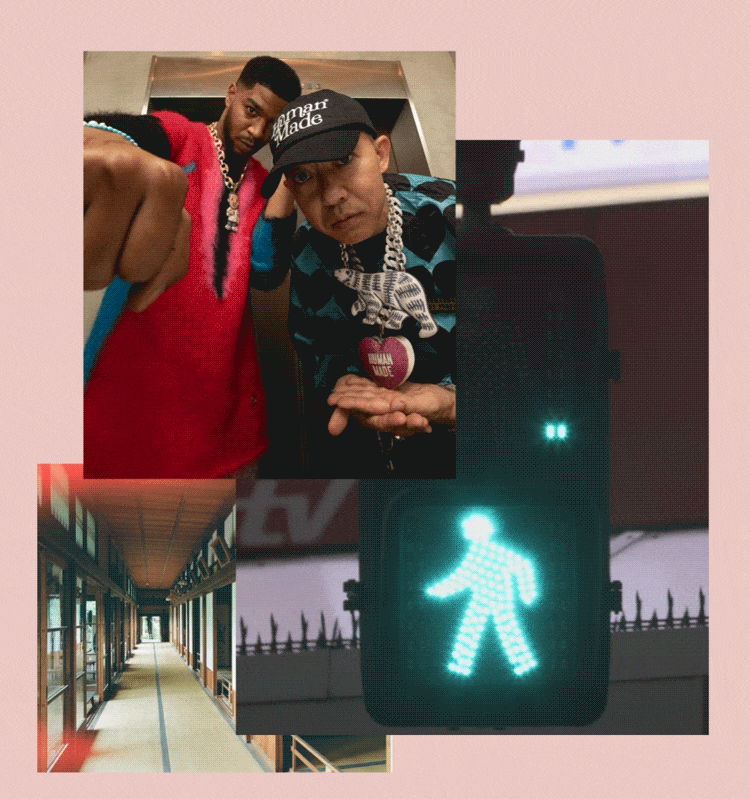
The day after the cover shoot, Cudi pulls up to NIGO®’s atelier with his manager, security, and friend Ibn Jasper. But this time, the visit is strictly personal; NIGO® invited him back just to kick it. As Cudi makes his way into the building, he says his hellos and, later, follows NIGO® to the photo studio on the second floor. NIGO® wants to take his picture. Happy to oblige, Cudi stands in front of the white walls, throws his hood on, and inches to the left. NIGO® snaps the Polaroid and hands Cudi a black marker. “MAD LOVE TO THE ORIGINAL GENERAL,” the rapper writes on the borders of the photo.
NIGO® likes to take Polaroids of guests who stop by his atelier. There are roughly 70 of them, all signed, taped to the back of one of the doors to the photo studio. There are ones of old friends—Shawn Stussy, Futura, Jacob the Jeweler, etc.—but also guys like Pharrell, West, Tyler, the Creator, A$AP Rocky, and Pusha-T. It’s an impressive list, and reads like a who’s who of culture, but it’s also a snapshot of the people he’s inspired.
“I think NIGO® is just as important and significant to hip-hop as a Pharrell or a Slick Rick or Kanye—not as far as music ability,” Rocky told me last year. “I would say how he influenced people’s new style and how he just came through with a new way to rock shit.”
Like NIGO®, Cudi has influenced some of today’s biggest stars. Travis Scott, Lil Yachty, Juice WRLD, Timothee Chalamet, and Pete Davidson have all gone on record about how he’s changed their lives. In early June, Rocky, who calls Cudi a “dope big bro,” said that a joint tour with the rapper is a “goal.” “FACT$!!! THIS IS A GOAL LET$ MAKE IT HAPPEN!!” he tweeted.
Much has changed since Cudi and NIGO® first came onto the scene. NIGO®’s no longer with Bape and is focusing on Human Made and other business ventures, including his Curry Up restaurant in Tokyo and Otsumo Pearl tapioca tea shop in Kyoto. Cudi’s on his ninth album and, after a short stint in rehab and releasing Kids See Ghosts with West, is in a much better place in his life. After over a decade in the game, they have left an expansive mark. But as the world catches up, NIGO® and Cudi are already steps ahead.
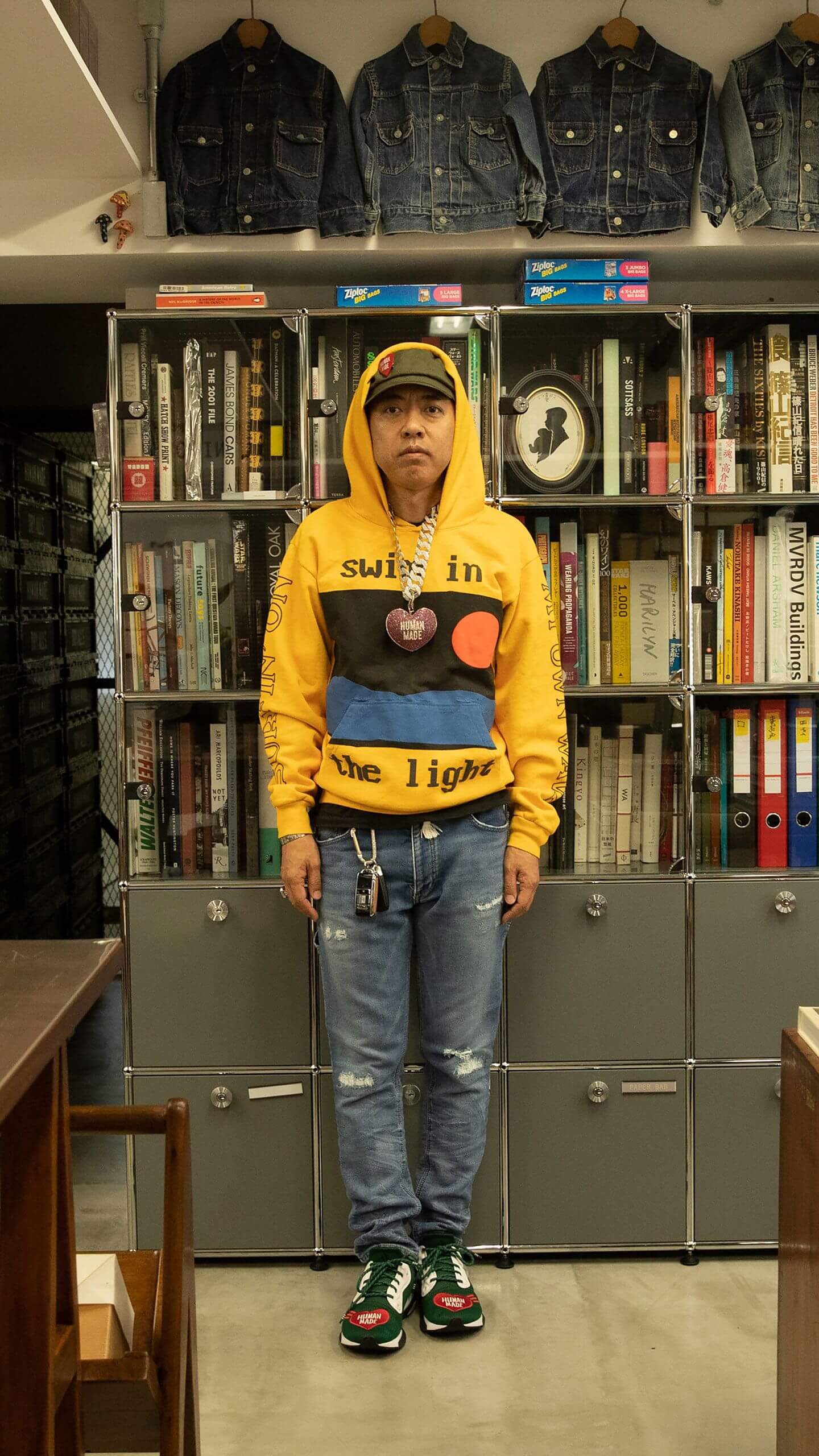
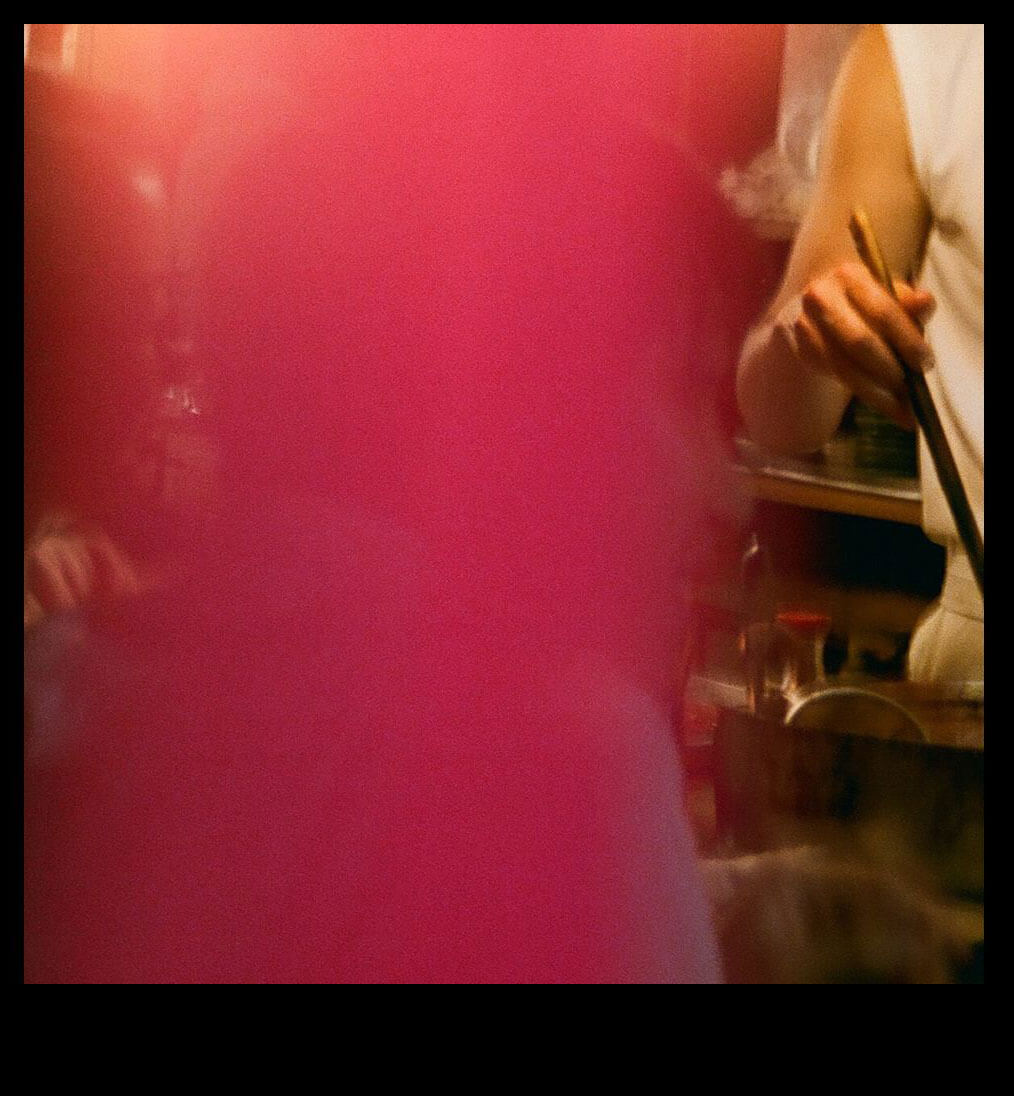
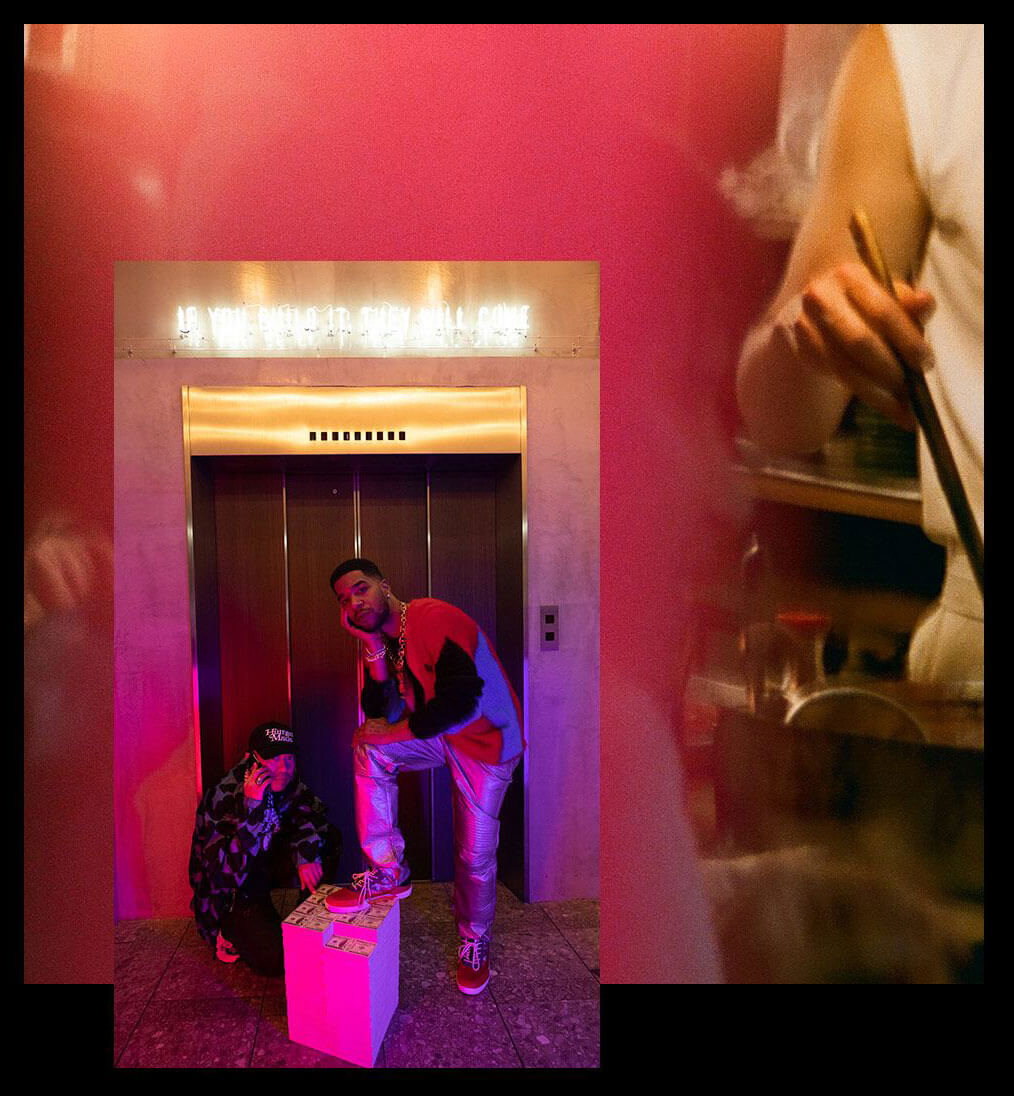
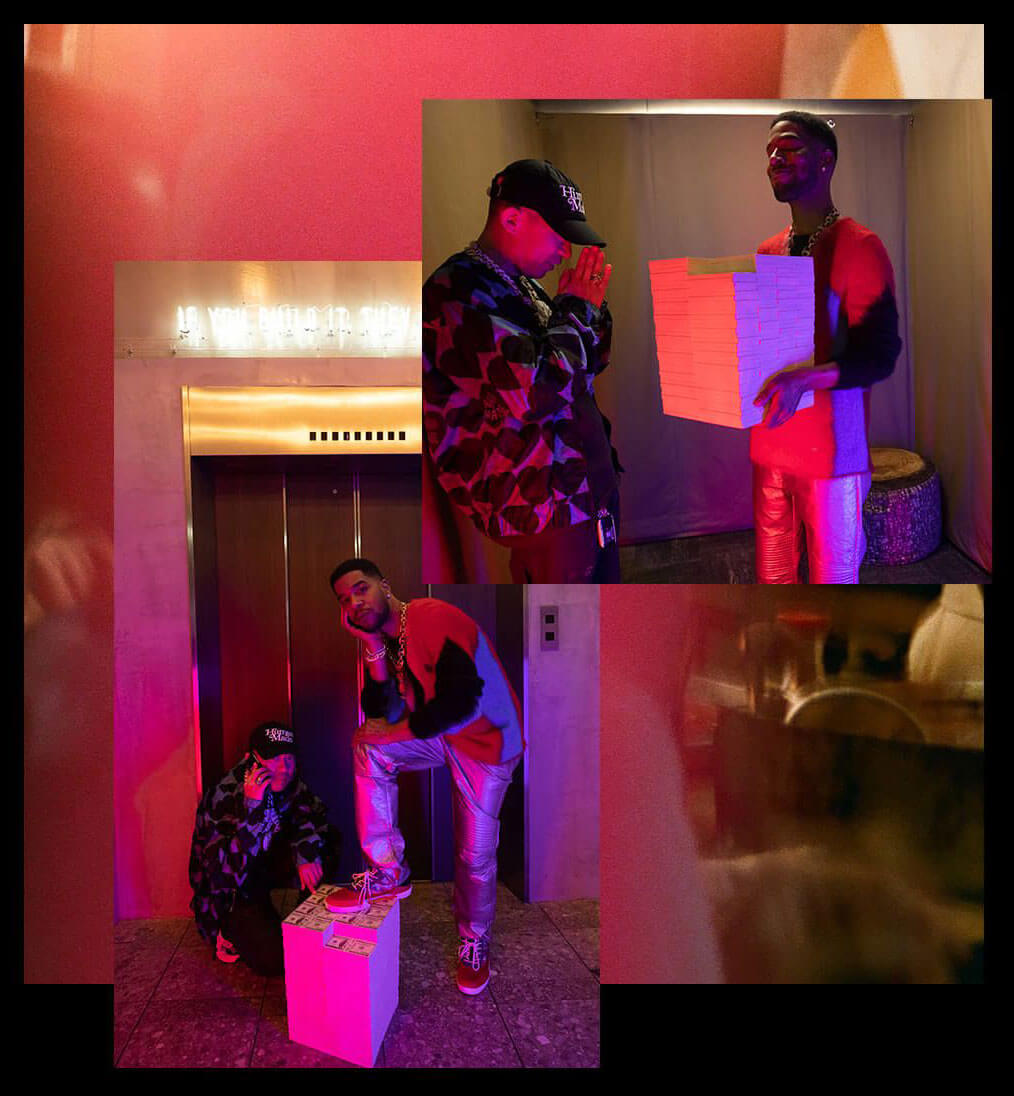
Cudi, you tweeted that you’re working on new music. What can you tell us about that? How does it sound?
Kid Cudi: I can’t say much ’cause the music isn’t gonna come out till next year. But I will tell you this: I’m working on a Netflix TV show, an animated TV show, and Kenya Barris is producing it. My next album will be the music for the first season of the show, and the music will narrate the story. So a lot of the songs aren’t really from the Scott perspective; they’re from the perspective of the character.
That’s different for you.
Kid Cudi: Yeah, and it’s a new, fun, and exciting way to write music. I have eight albums. I needed to do something different.
It’s interesting that it’s not from your perspective, because your previous albums have been so personal. What made you want to go that route? Is the music slightly based on you, or not at all?
Kid Cudi: No, it’s not. A lot of the songs are about love and relationships. I’m not in a relationship right now, so it’s purely written from my imagination and writing as this character. That was something that was exciting to me because, after Kids See Ghosts, I felt like I said all I had to say.
About yourself?
Kid Cudi: About the point where I’m at right now, post-rehab. And Kids See Ghosts was that album for me. I didn’t know if I was gonna drop anything after Kids See Ghosts anytime soon. I was thinking about taking five years off.
Five years is a long time.
Kid Cudi: But I had other things I wanted to do. I’m shooting an HBO mini series.
And you’re doing something with Jordan Peele, right?
Kid Cudi: Yeah, I’m working on a TV show with Jordan. I have a lot of things I’m working on, so I wanted to give myself time to focus on those things, but the music was something that just called to me. I was just feeling inspired to work, and I’m always in the studio tinkering around with sounds and trying to create stuff.
I had this idea for the show, and then it was like, how can we incorporate the music? How can we have the music be a part of the show? I initially wanted to make a visual album, but I was like, that’s been done before. How can we give it a little twist? How can we do something different? That’s how I came up with the idea for the show, Entergalactic. I’m trying my hardest to still introduce new sounds and push the envelope, sonically. So it’s still gonna be like everything that people love about Kid Cudi music. The only difference is that it’s gonna be told from a different perspective. Some songs, not all songs. I have some songs where I’m just rapping—it’s just Cudi having fun again, and I think people miss that side of me. I used to do that a lot on my mixtape, so getting back into that was fun, and I think people are gonna be into it. I think this [album] is my perspective on love, and people haven’t really heard that. I’m not somebody who makes R&B music, and I’m not somebody who makes lovey-dovey songs like that. I’ve just never really had much luck in relationships, so I’ve never had anything to write from. And if I did write about my relationships, it would’ve been all disasters, so I needed something to inspire me to get me there, to wanna write about relationships, and this show did it for me.
Are we getting a Kids See Ghosts 2 album anytime soon?
Kid Cudi: There will be more Kids See Ghosts albums. Kanye already told me he wants to start working on the second one. It’s kinda weird, ’cause with the first album, I didn’t know how serious he was about making a collab album with me. He had mentioned it, but I thought it was just a good idea he had in the moment. But then he kept bringing it up and kept having me come to his house, listen to music, and work on beats, so I was like, “Wow, he’s really into this.” We had a discussion where he said he wanted to make a spiritual album and I told him, “Great. That’s what I do. I would love to do that, something I can sink my teeth into.” So there will definitely be more.
NIGO®, earlier we talked about the DNA and formula you’ve created. You’re no longer at Bape, but I feel like Bape doesn’t exist without your DNA. You created such a legacy there that the brand can’t just hire a new creative director or revamp the label. How do you feel about that?
NIGO®: To be honest, I think people who like Bape and the people I click with don’t really overlap at this point. To me, Bape is an old design, and my main focus now is Human Made. If anything, I find it unusual that people don’t go as much for my new stuff. I’m not saying, “Hey, buy my gear.” I just think it’s more fun to always be doing something new, right? It’s like pursuing your dreams. I often wonder why people are still stuck on that.
You’ve helped shape much of what streetwear is today. When you look at the industry now, what’s your biggest takeaway?
NIGO®: When we started, it was a genuine scene. It was really small, and it meant something because everybody who was in the scene had a certain level of shared understanding. Now, what is called streetwear is huge, mainstream, and, frankly, ordinary. In itself, I don't think it means anything anymore. The challenge now is to be able to do something in that world that can be unique or even just to have a reason for it to exist.
What do you guys want to be remembered by?
NIGO®: Well, I’m kind of like Yoda in Star Wars at this point. I’m just quietly going about my business, so I don’t really have a big statement to make. But if someone were to approach me and want to work on something, I’d definitely be on board. I’m not going to turn down any interesting projects.
Kid Cudi: I guess I want people to remember me as an honest person. That every line I ever rapped, everything I ever said, was all true. It all came from a real place. And I want people to know that when it’s all said and done, doesn’t matter if they like me or they hate me, they just know I gave it my truth and I always have been living in my truth. And I want people to also see that I wanna help people, that I’m trying to make the world better.*